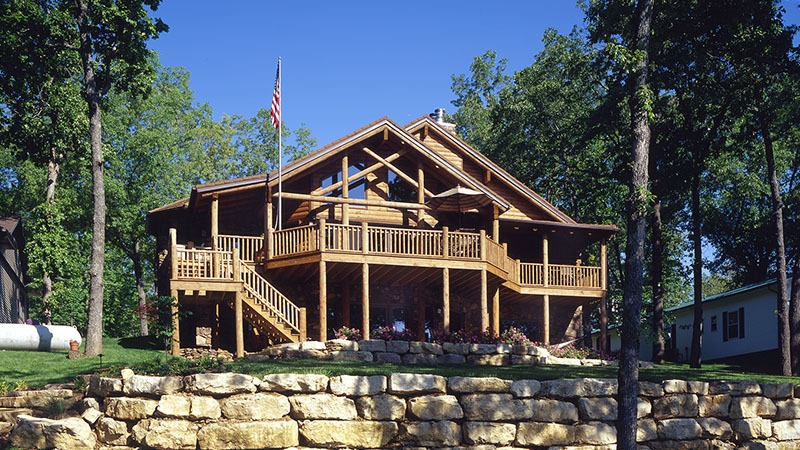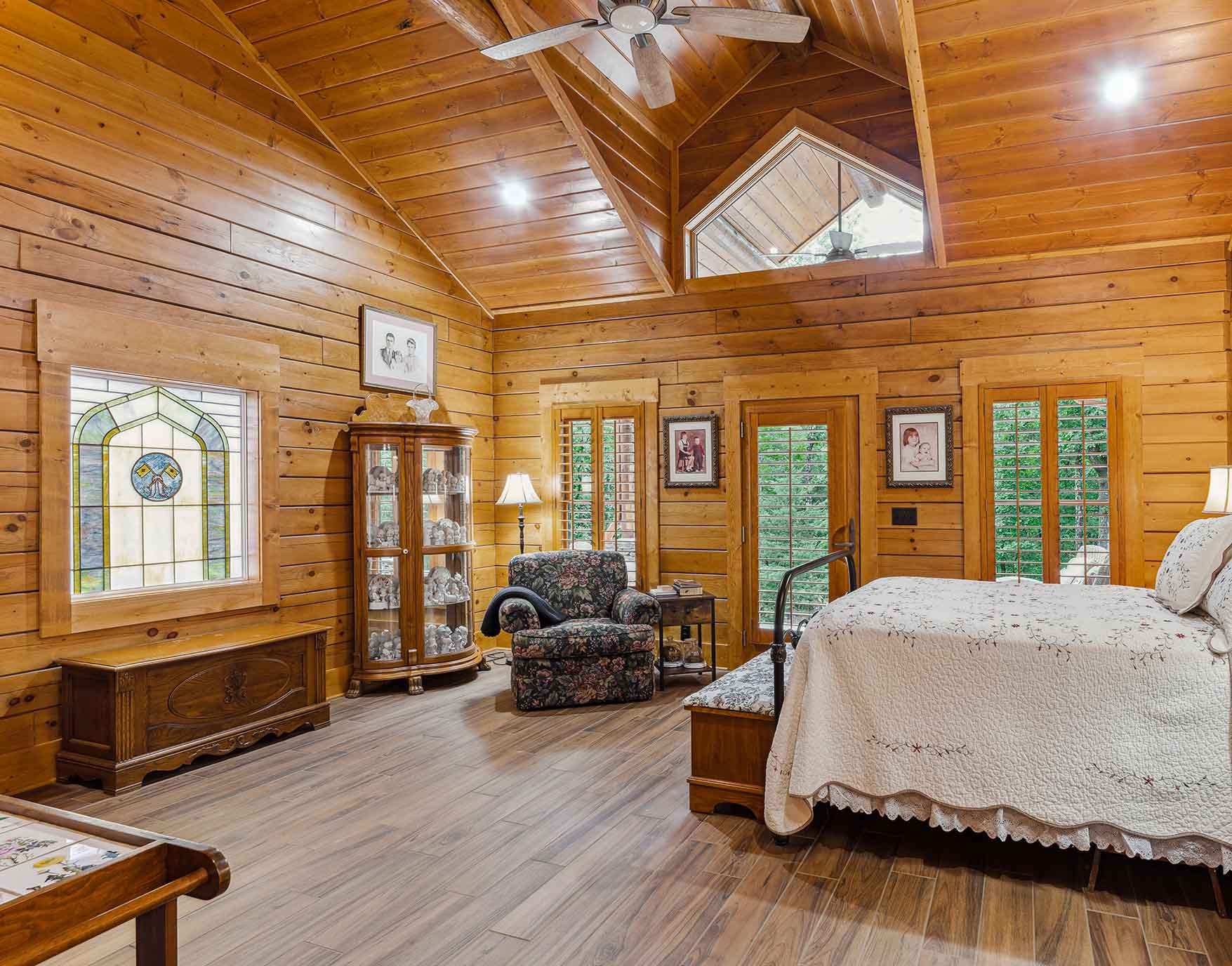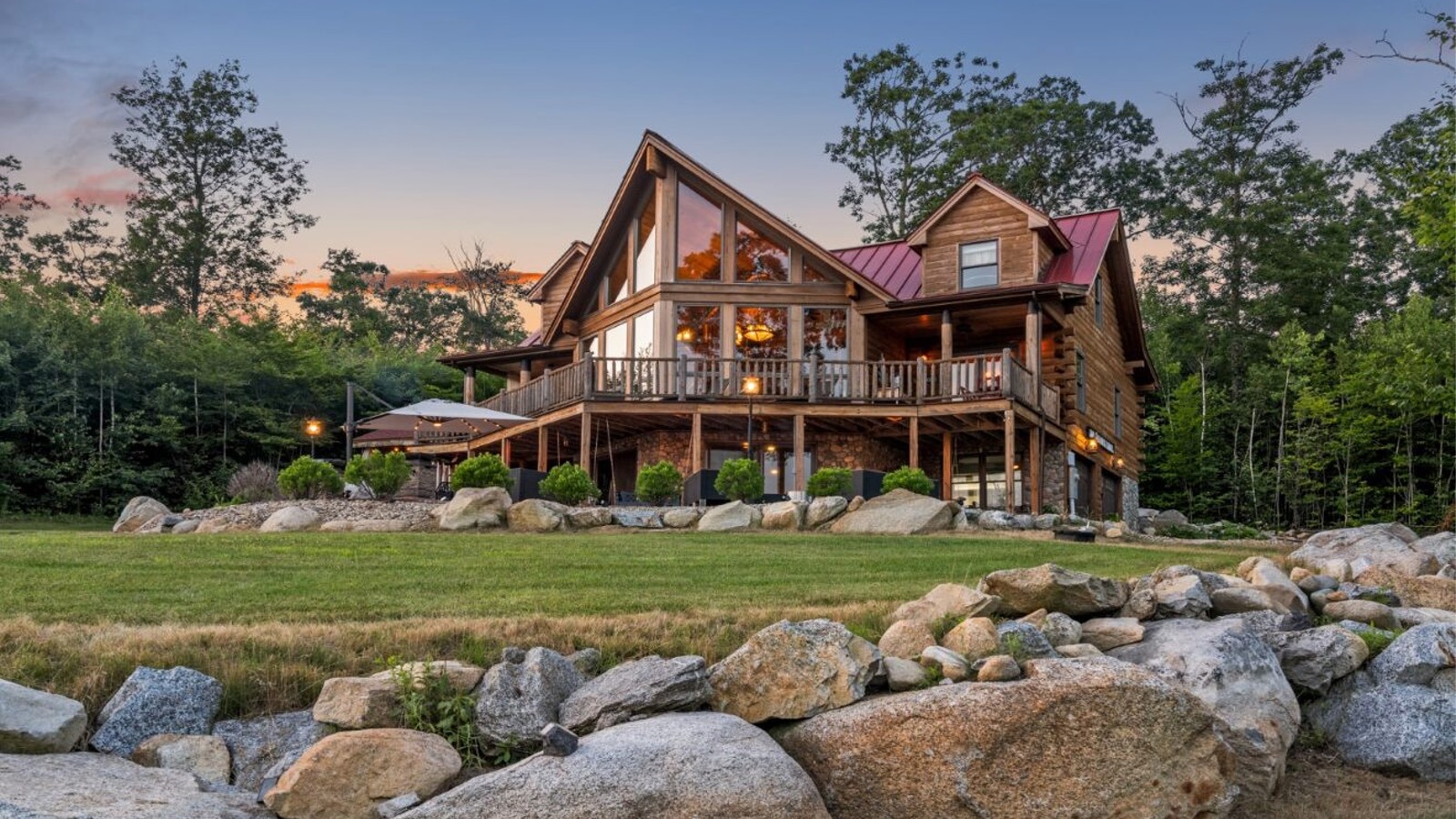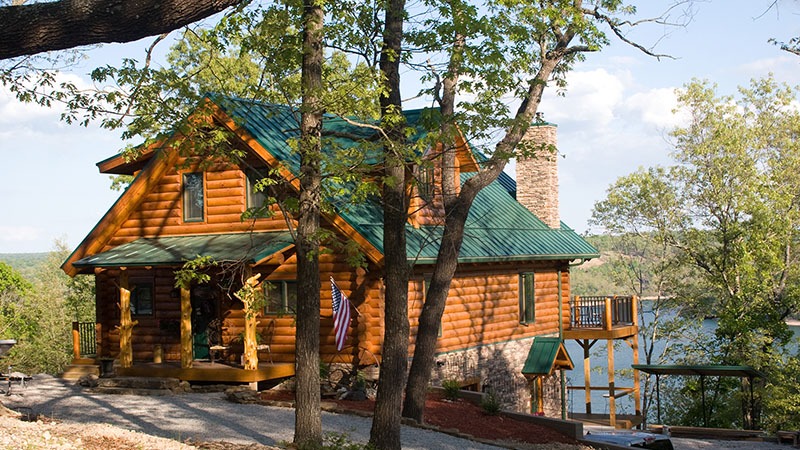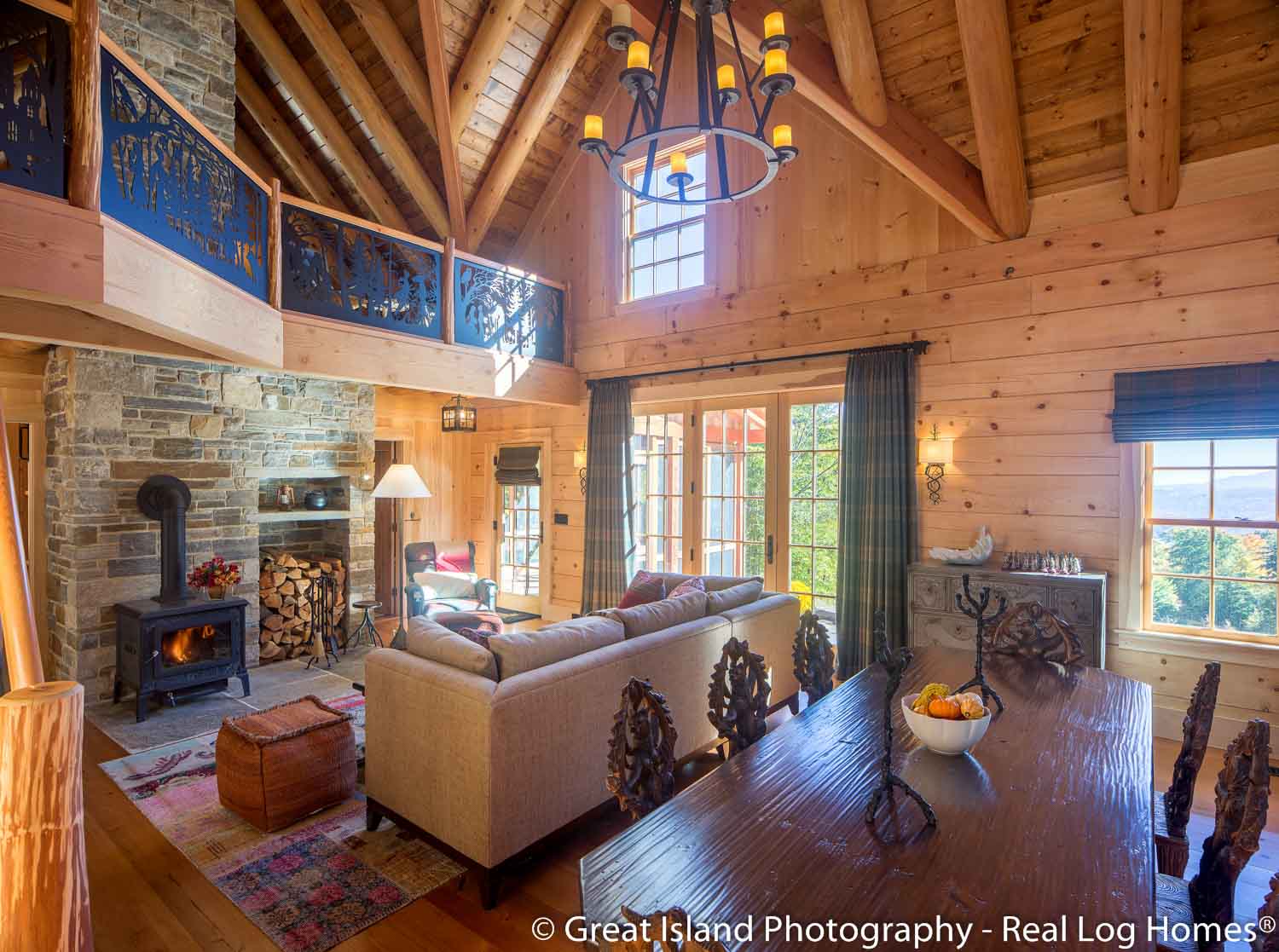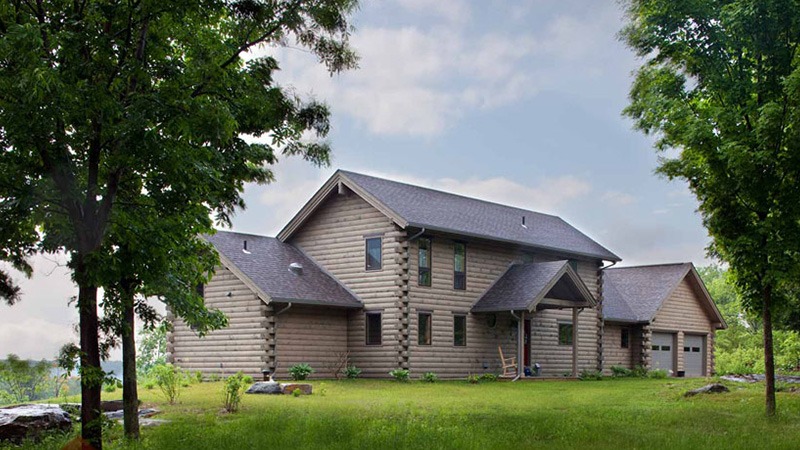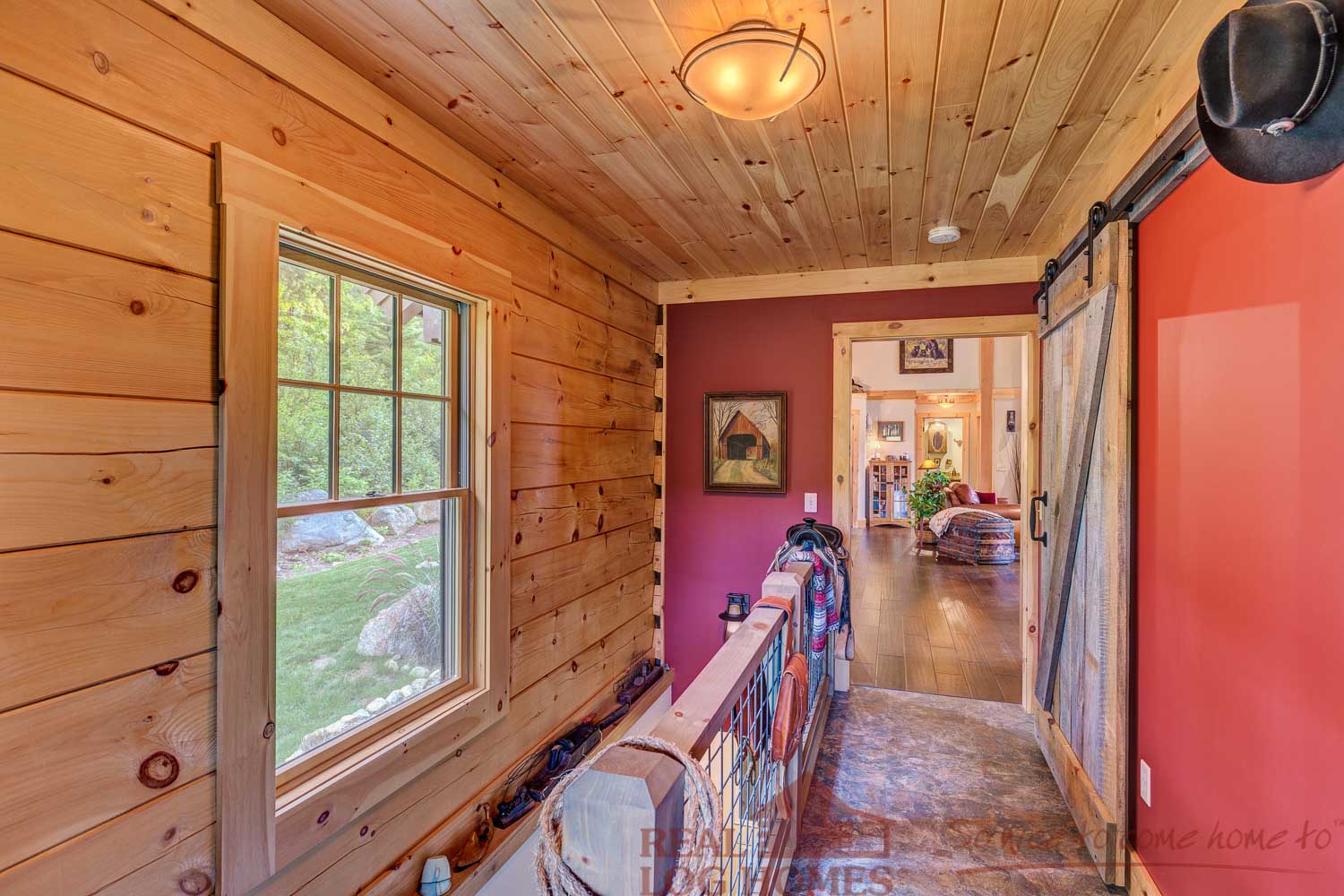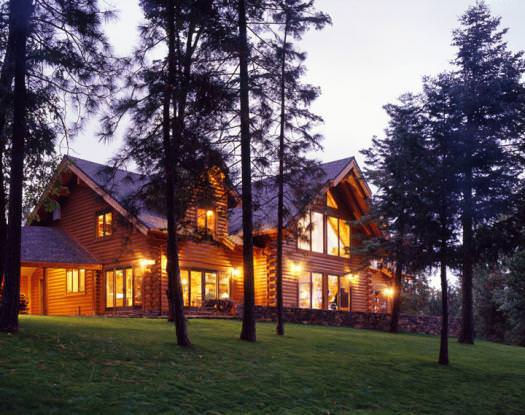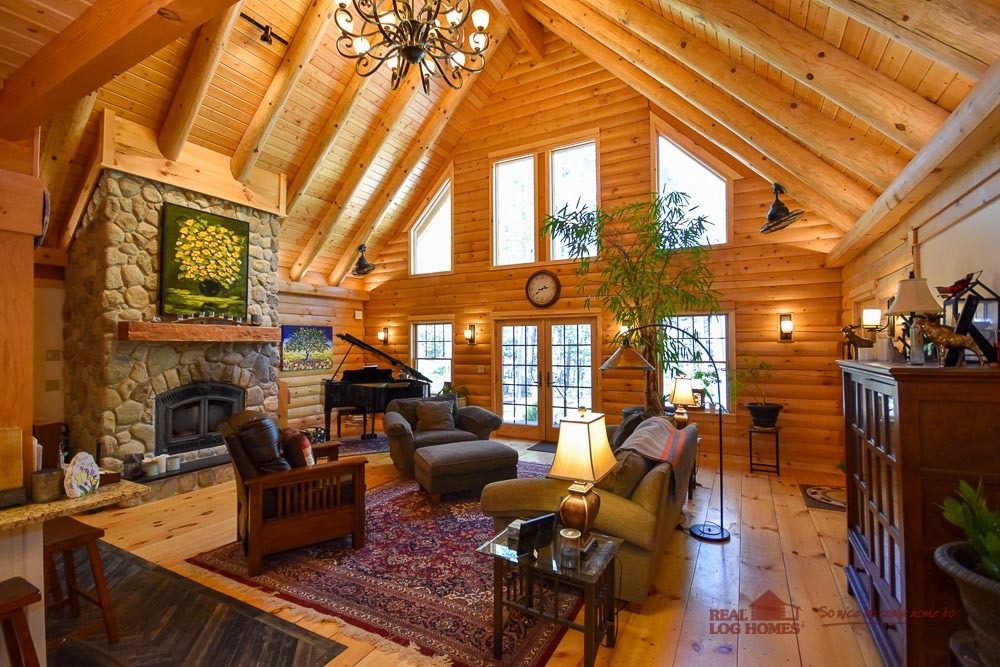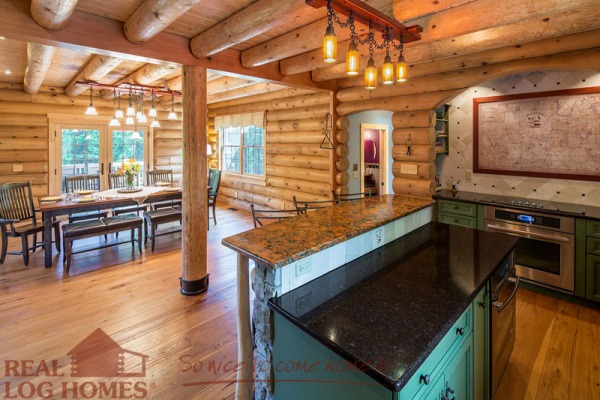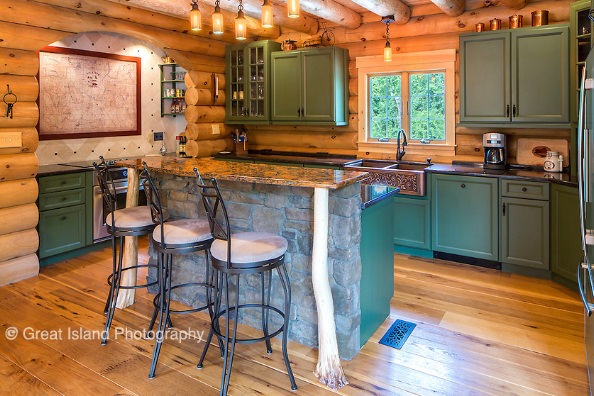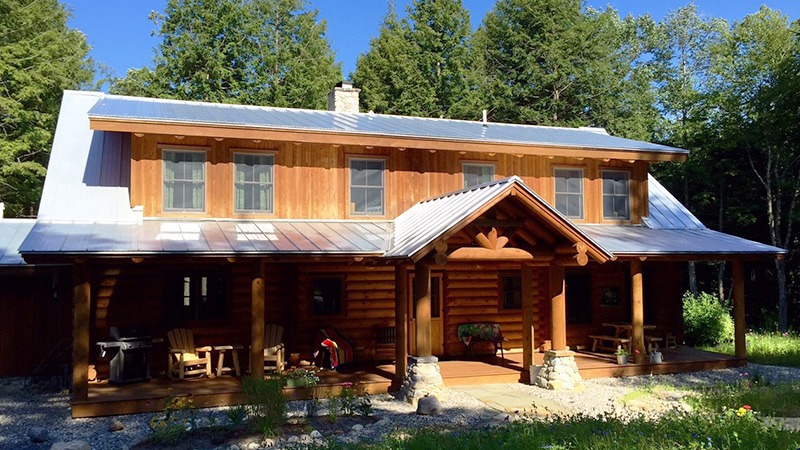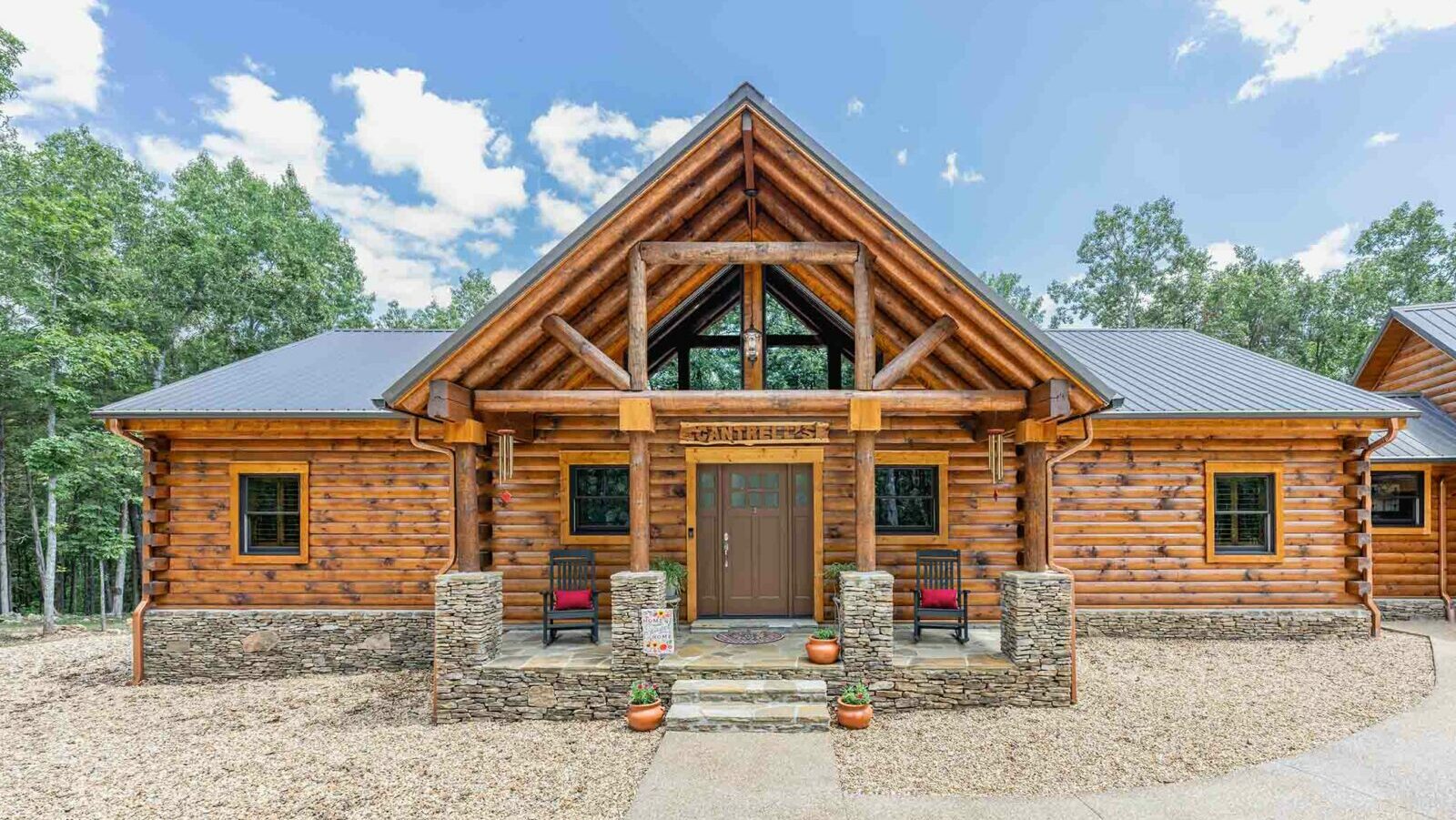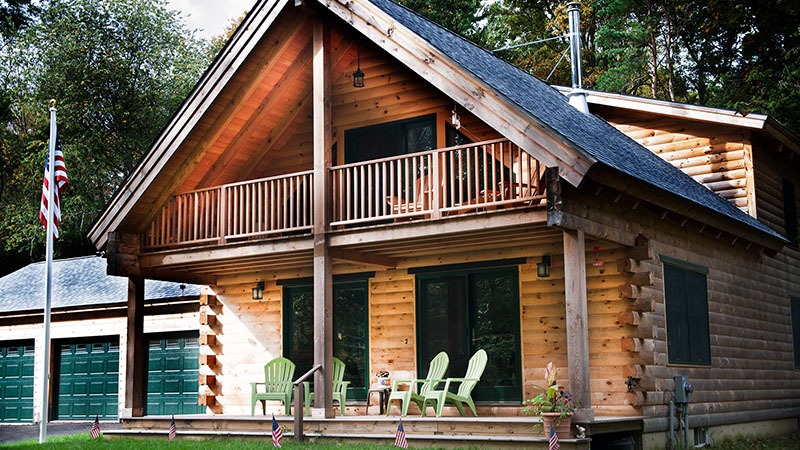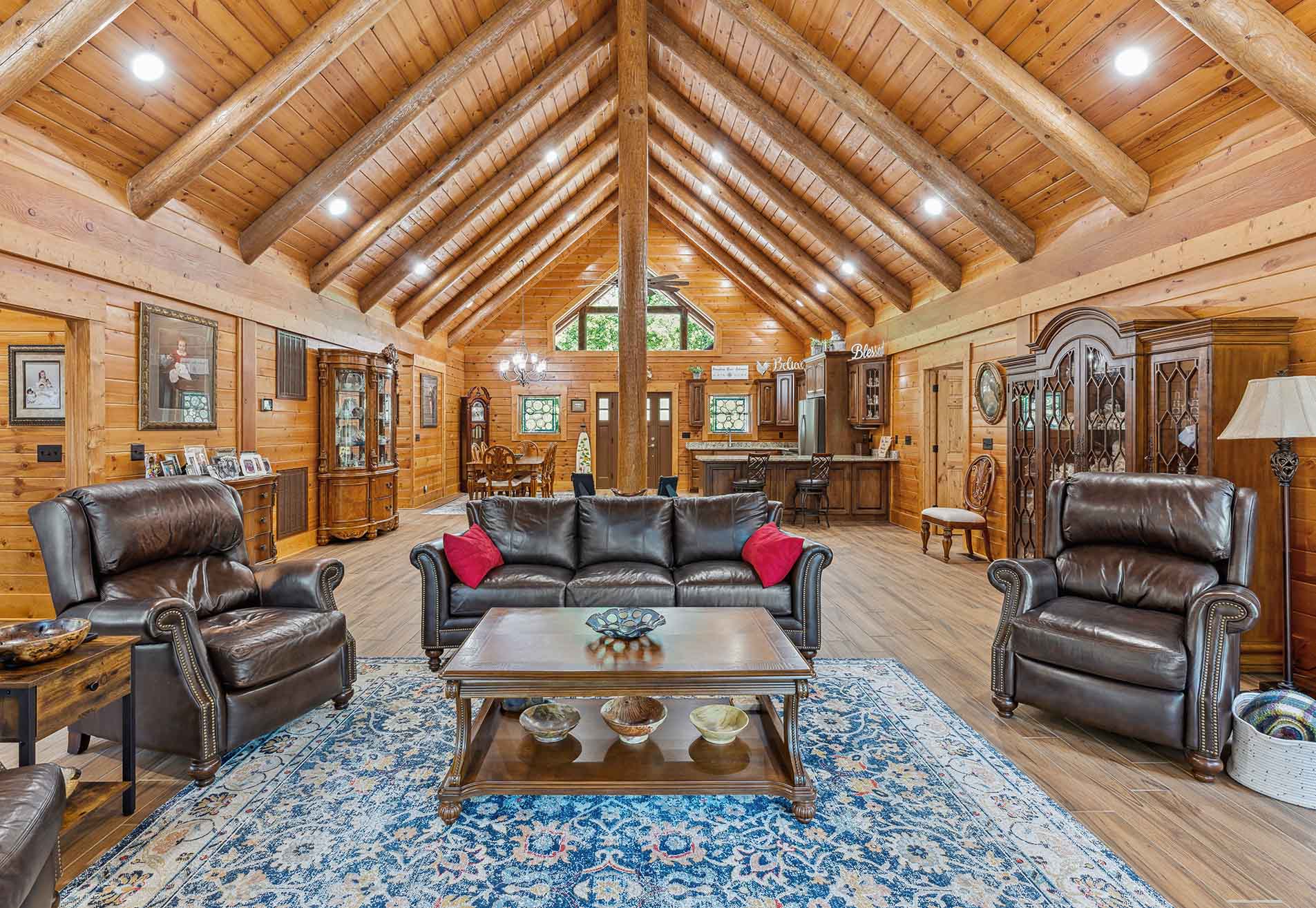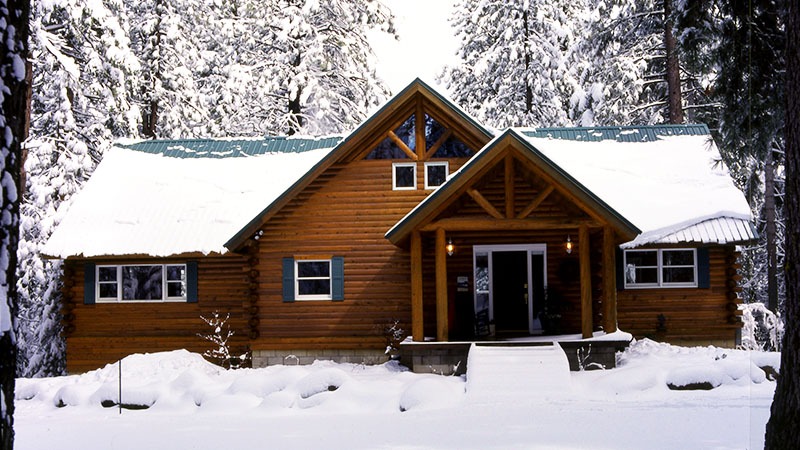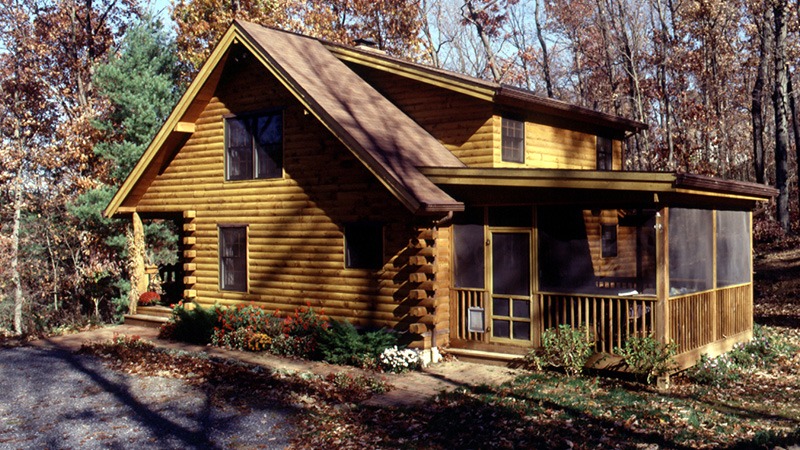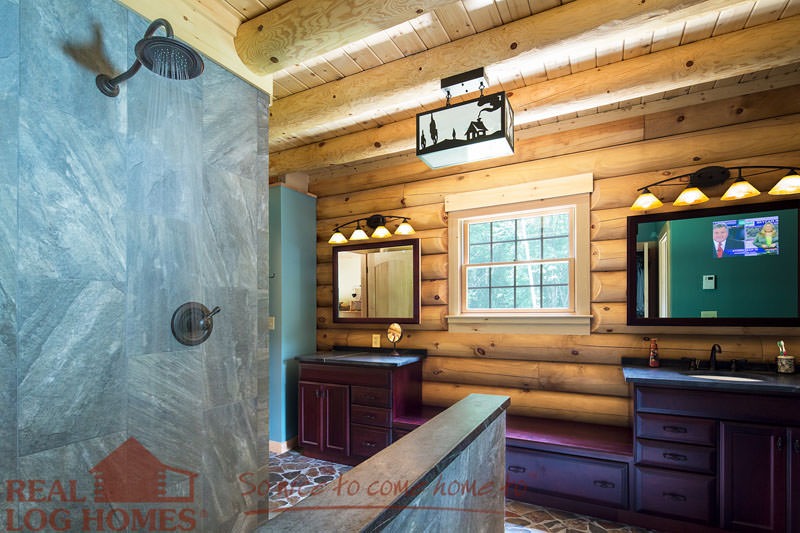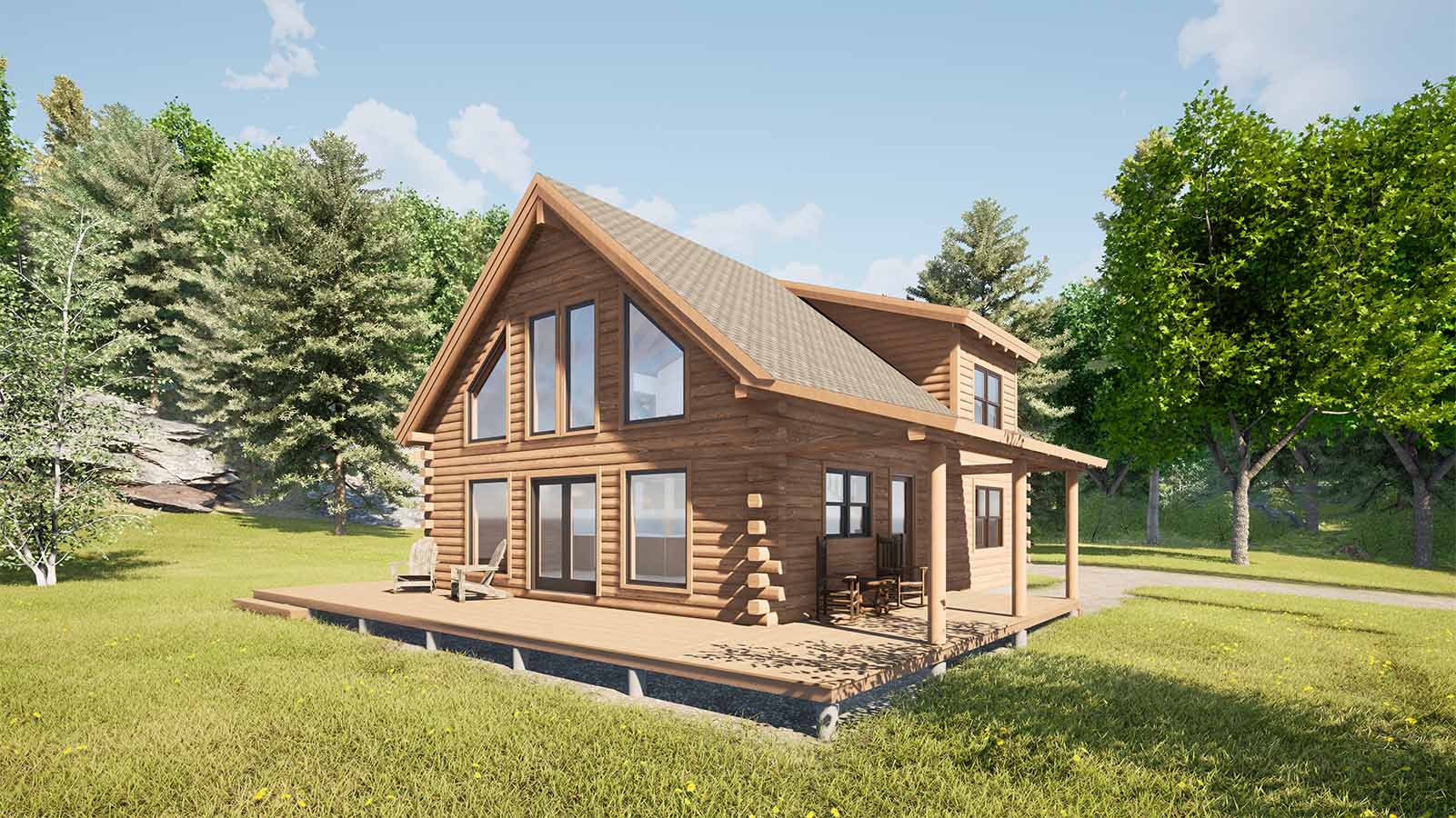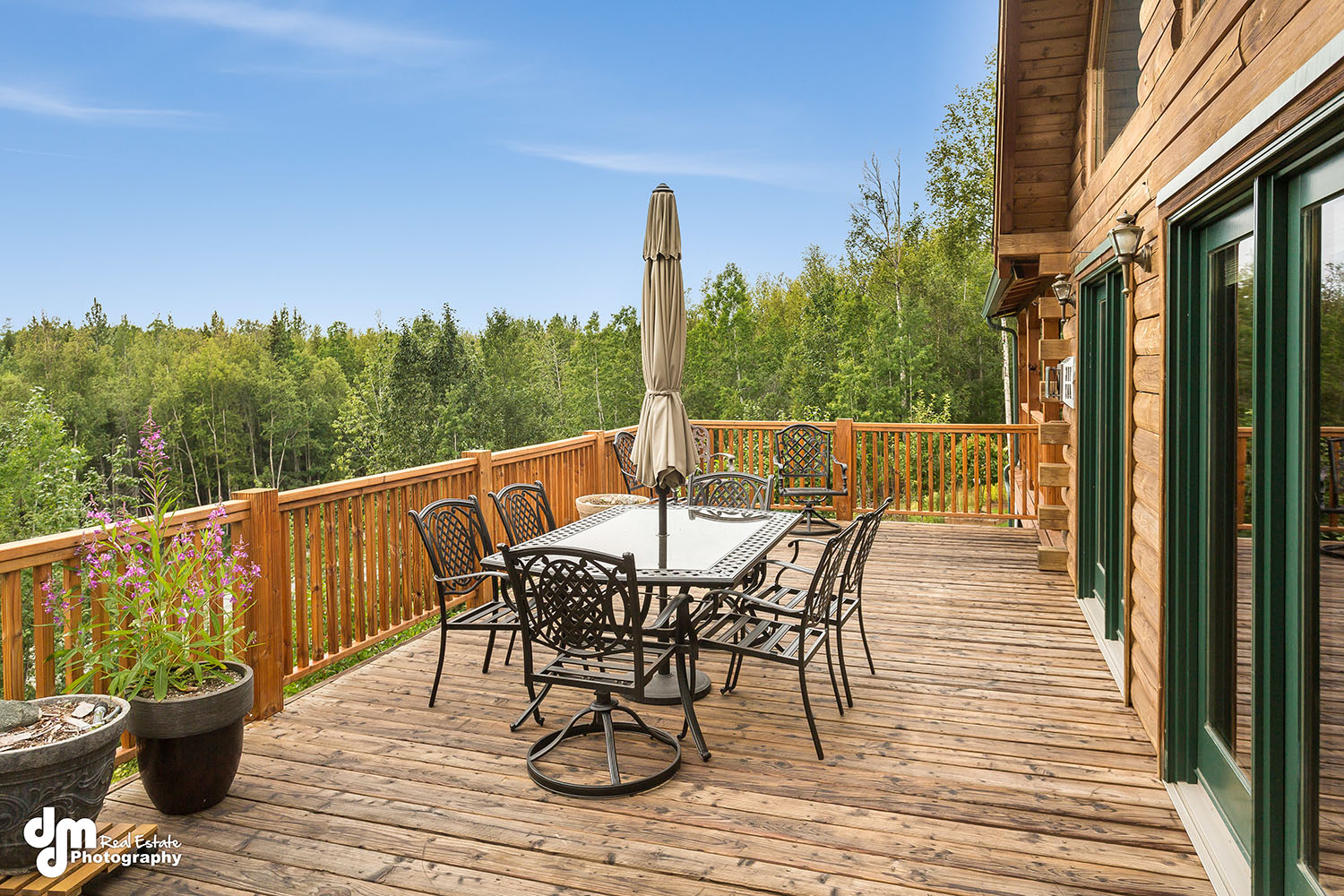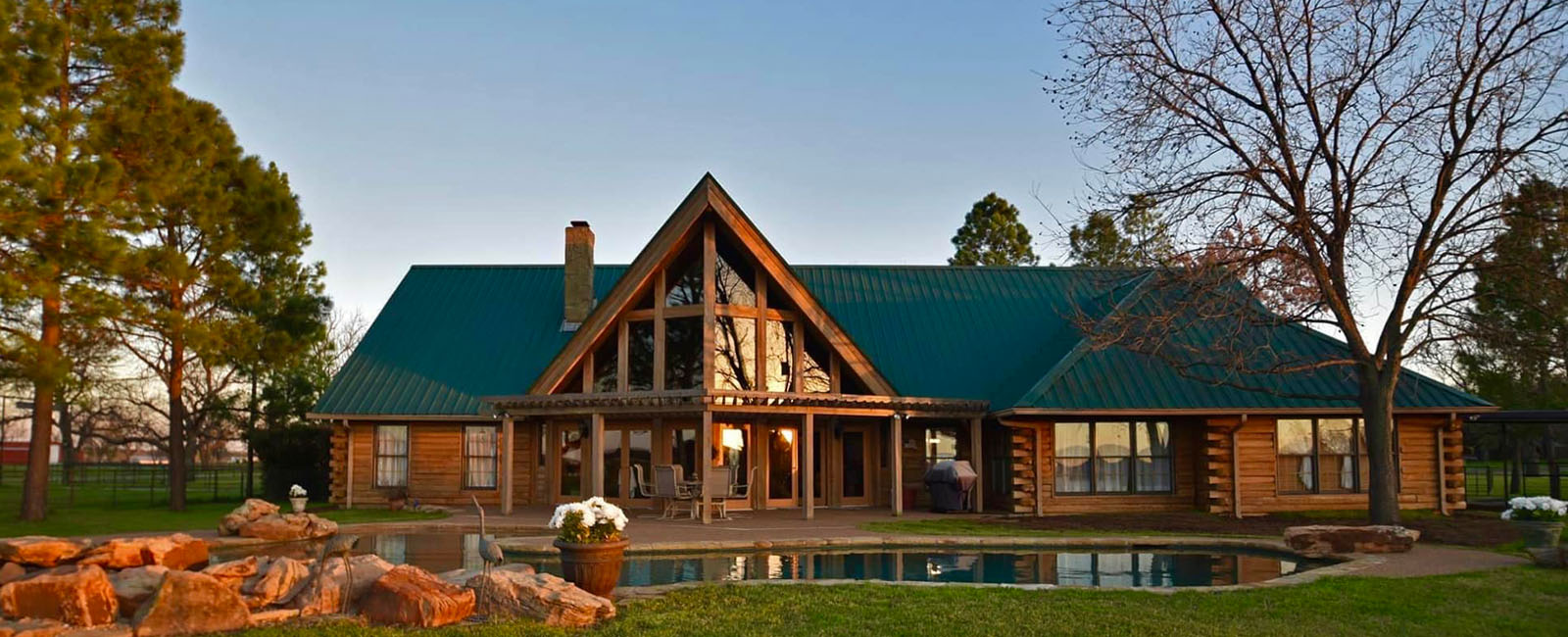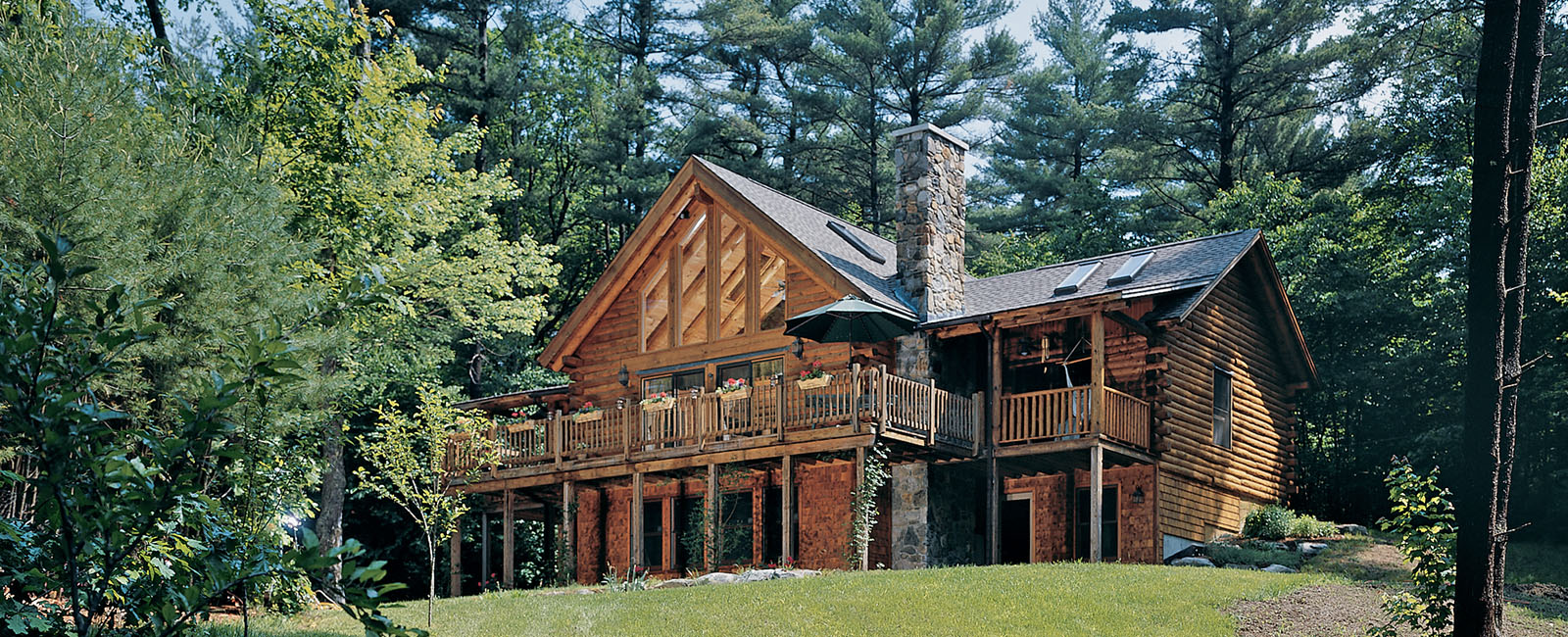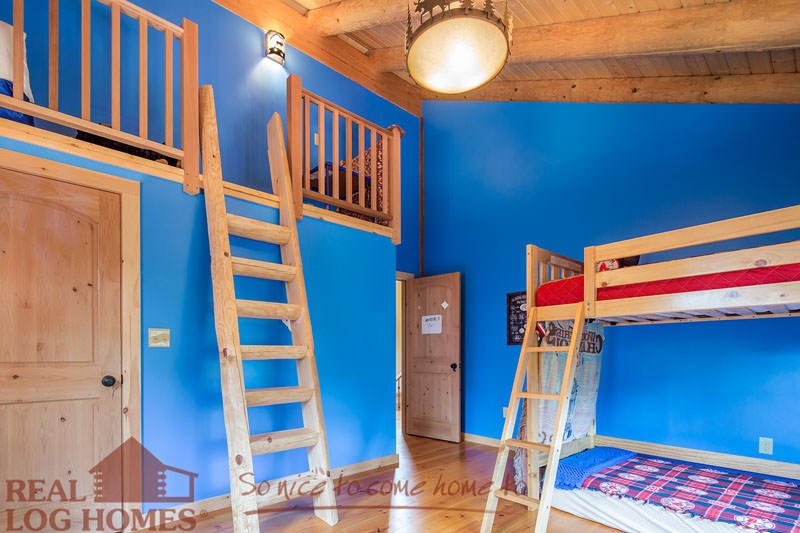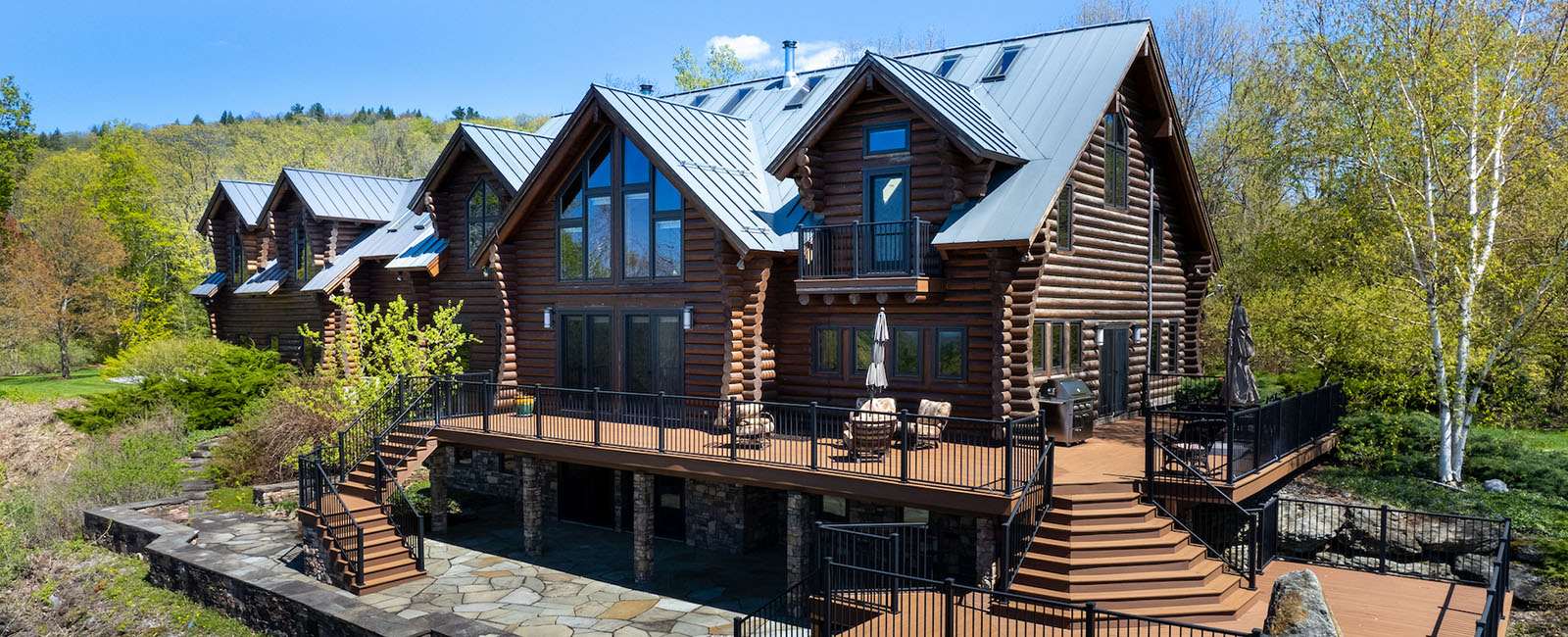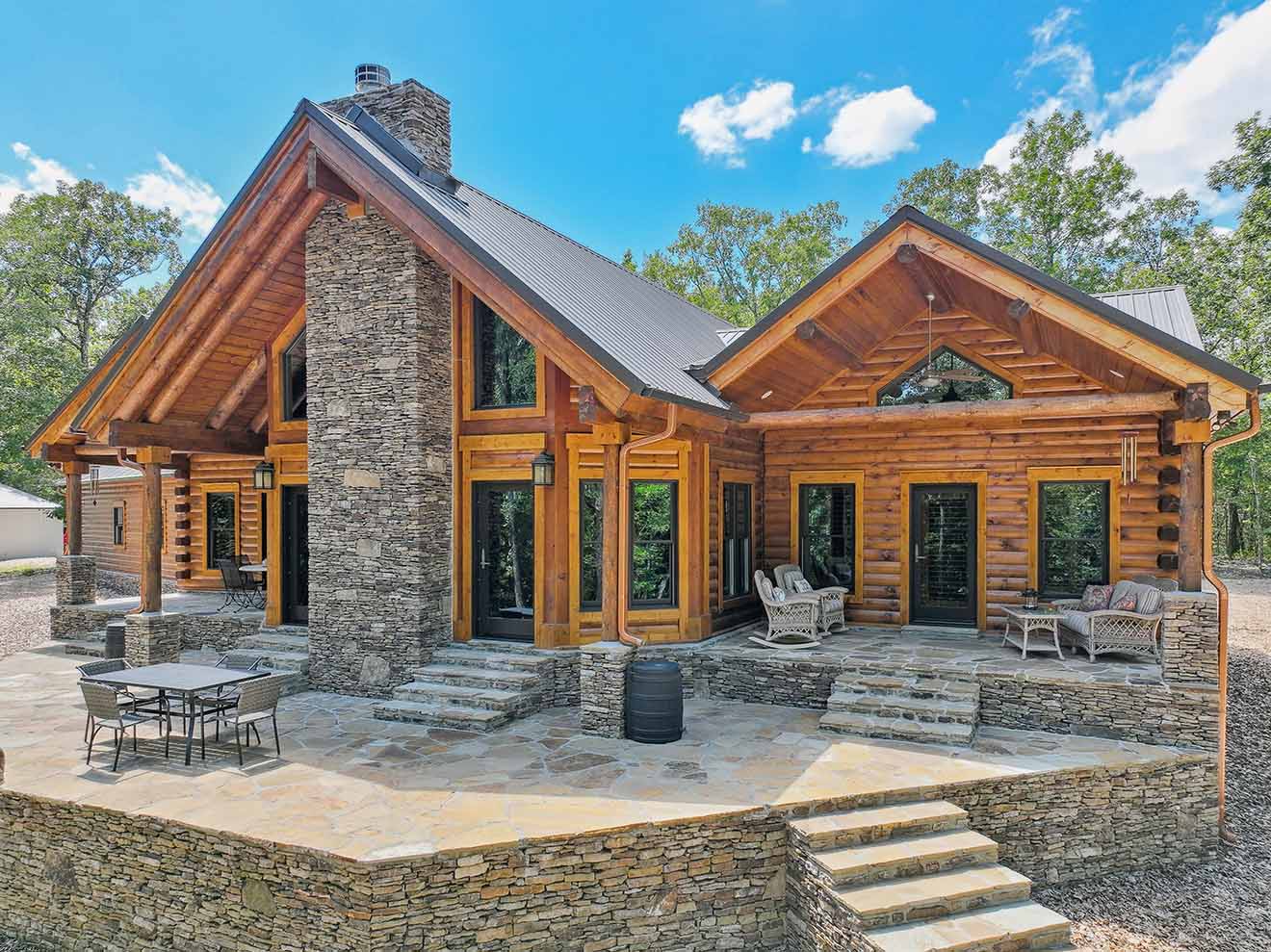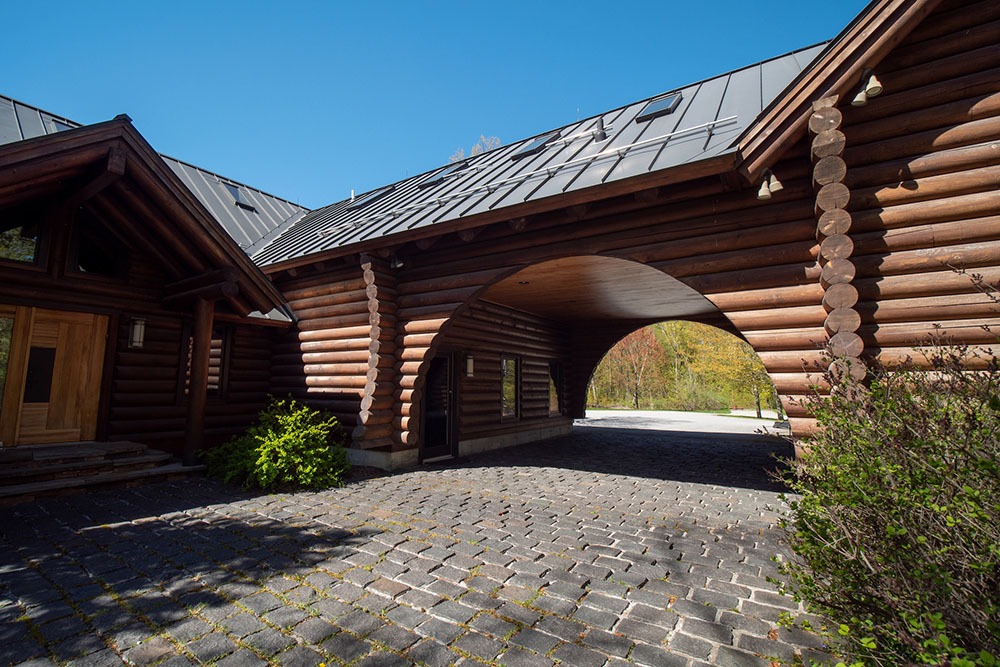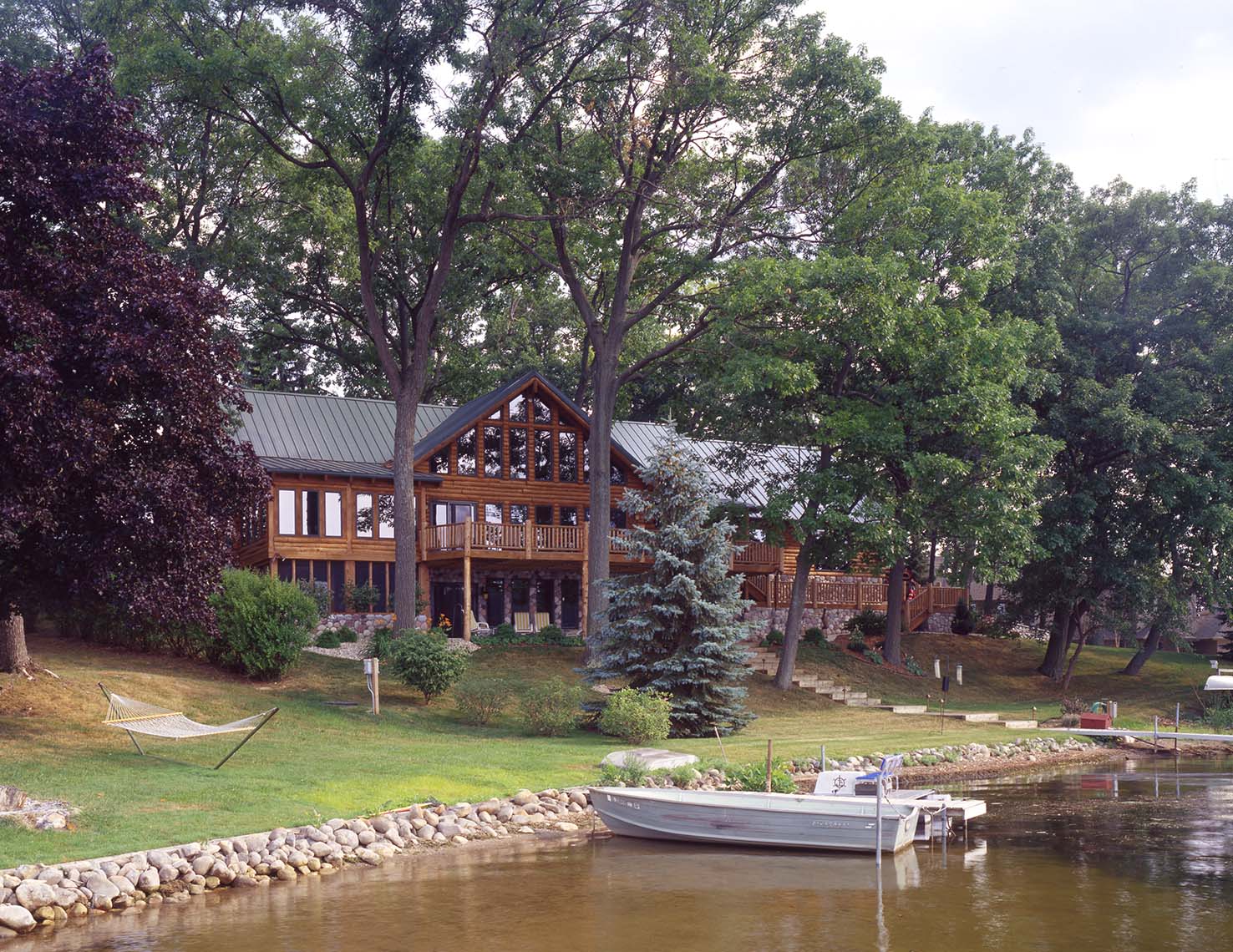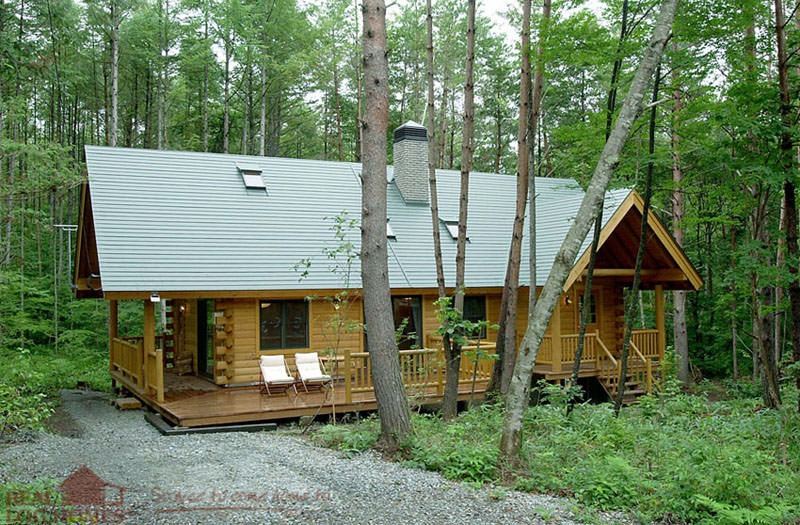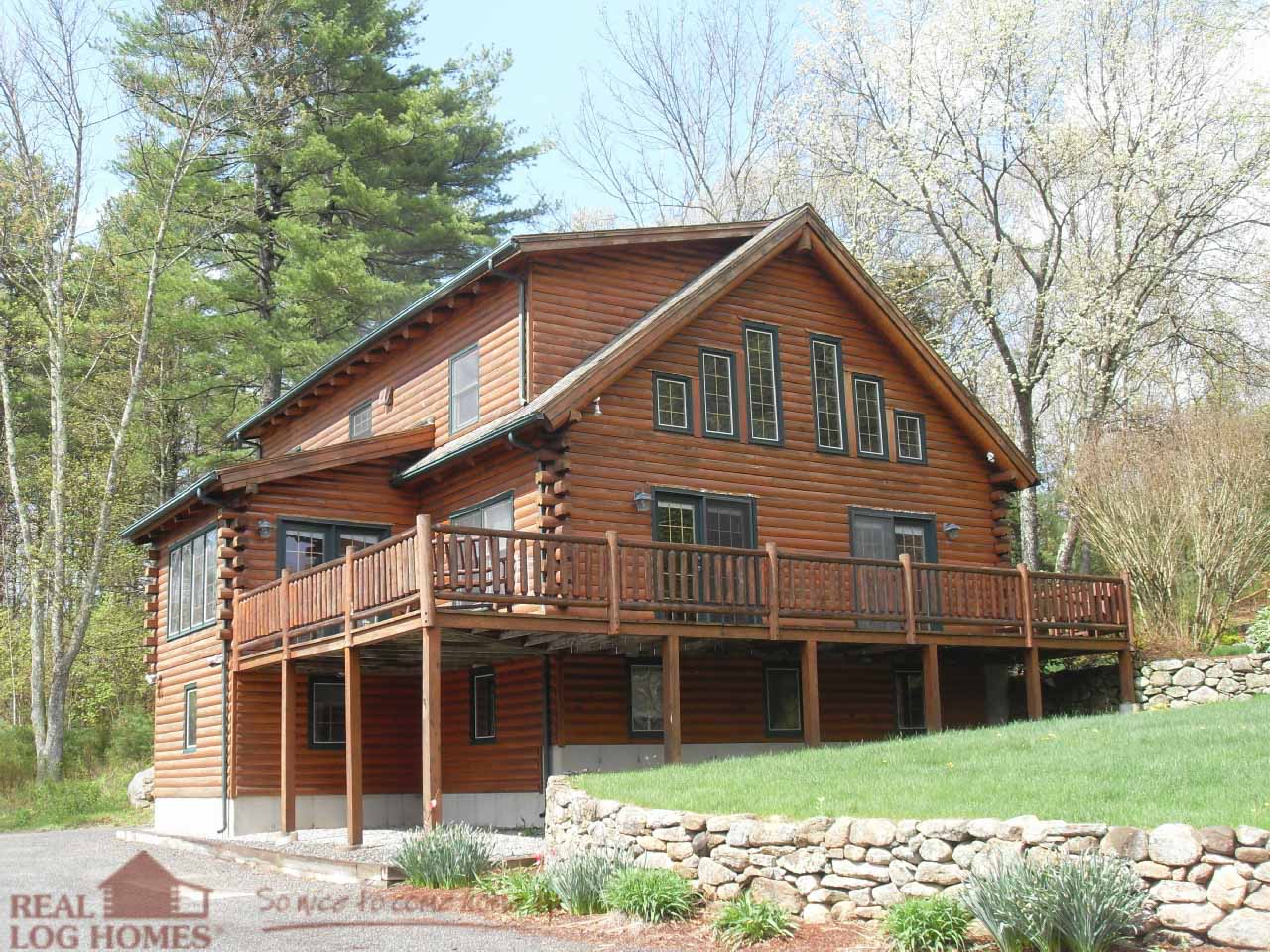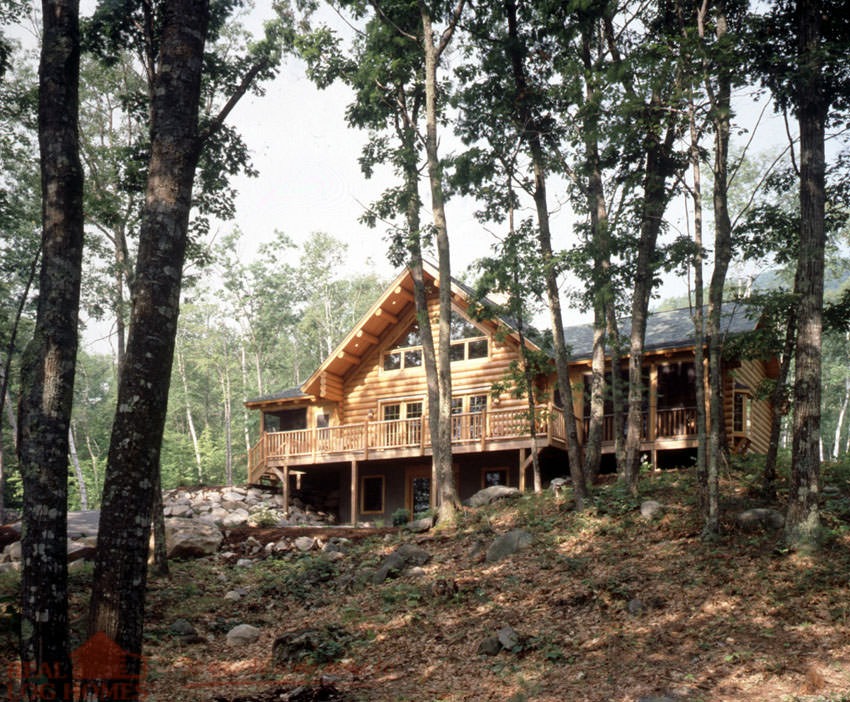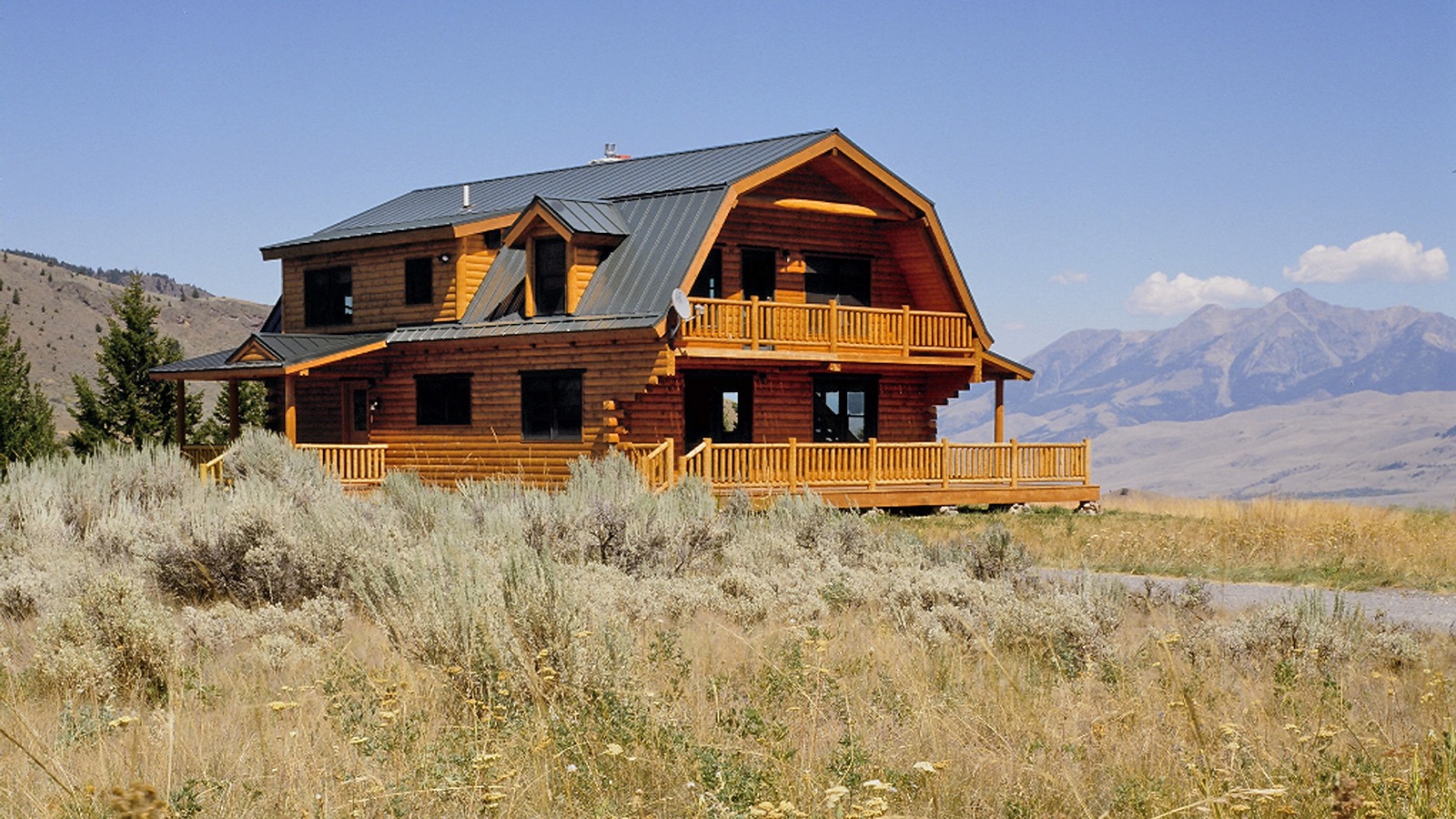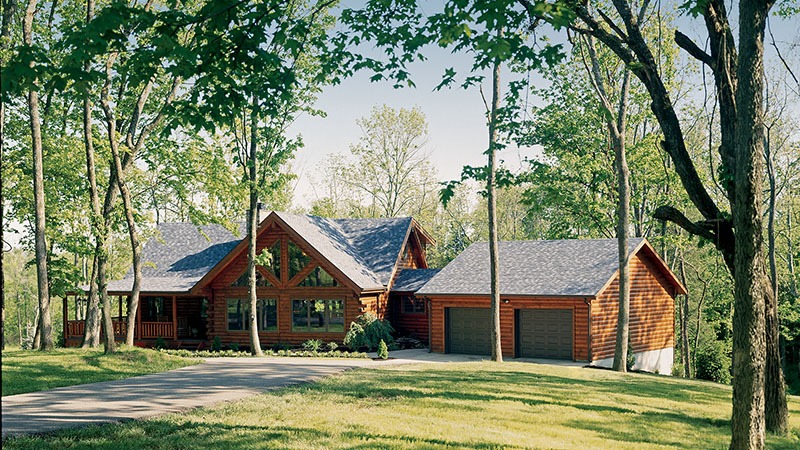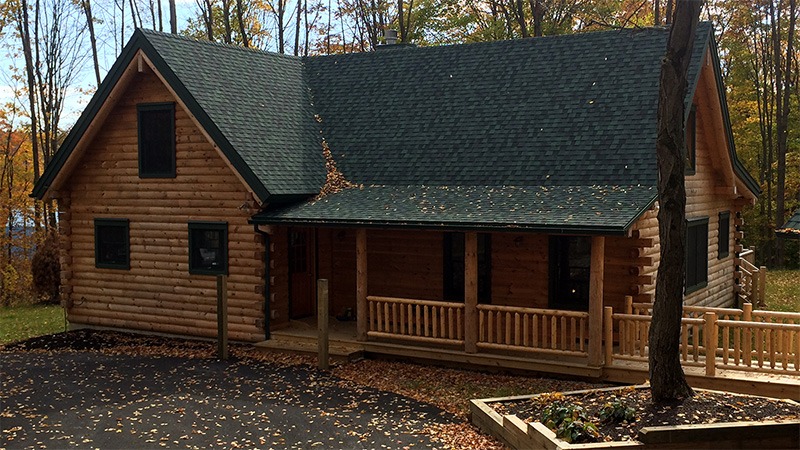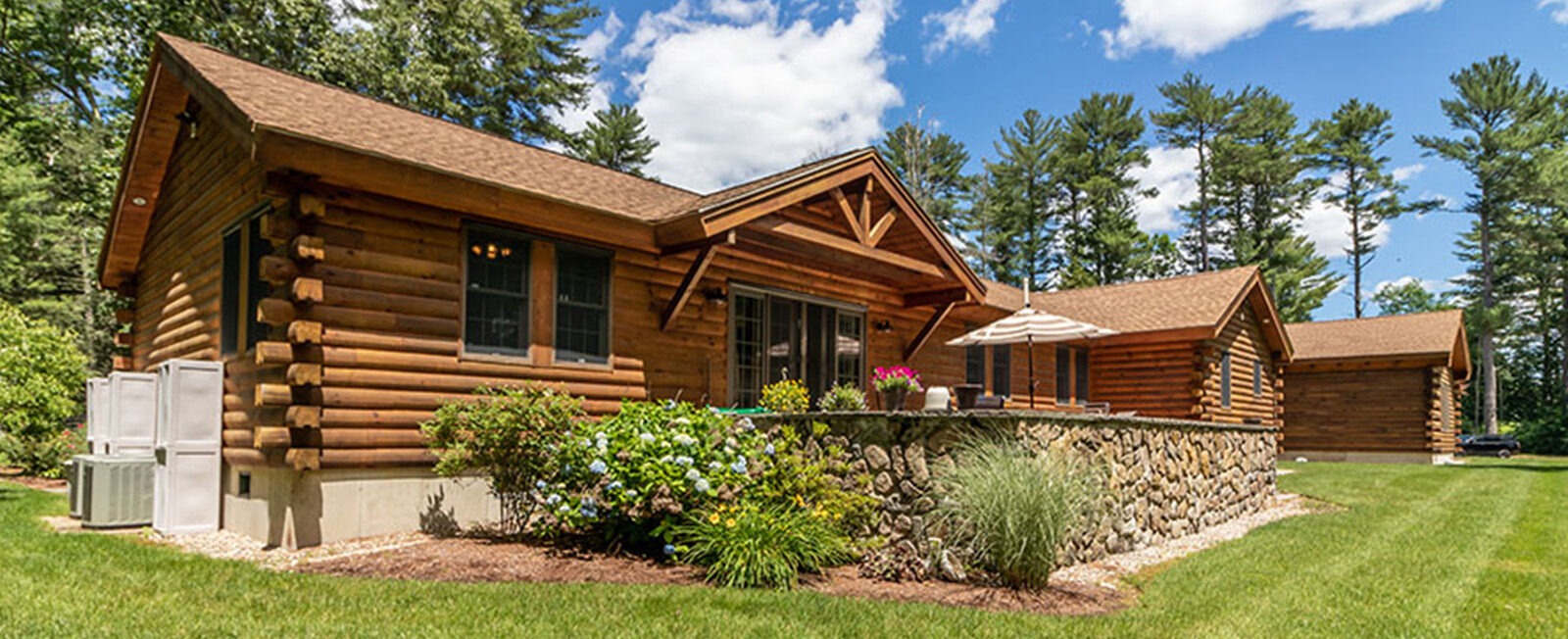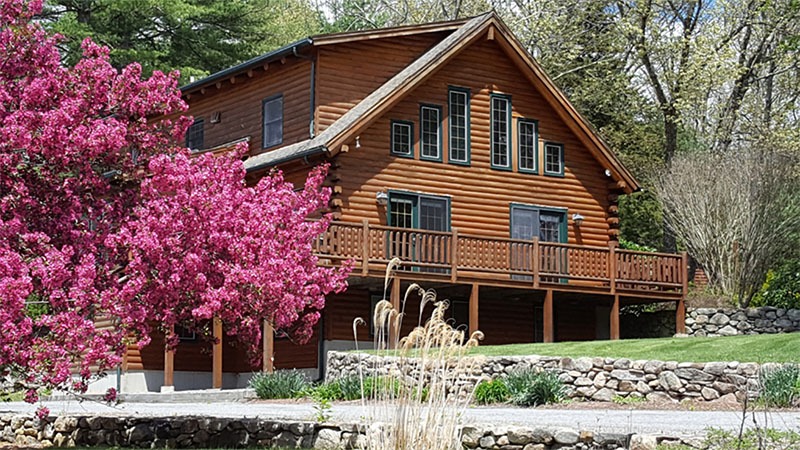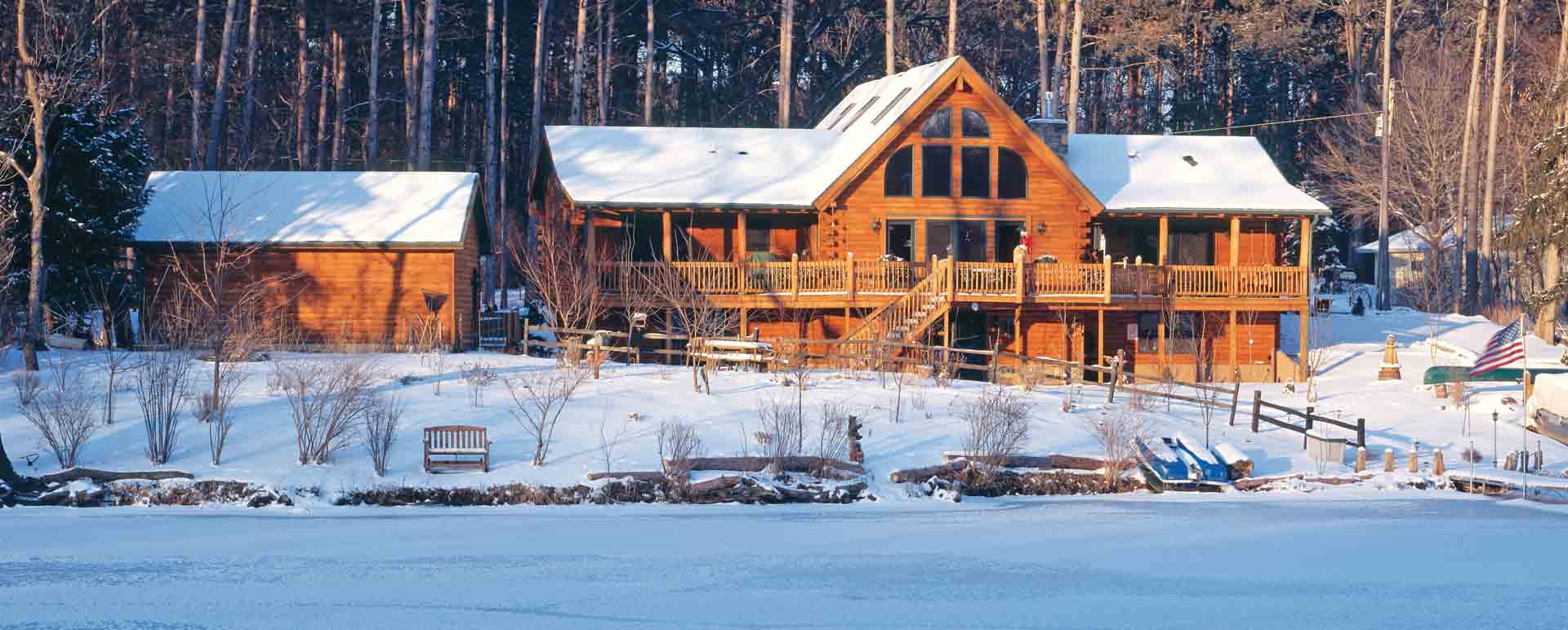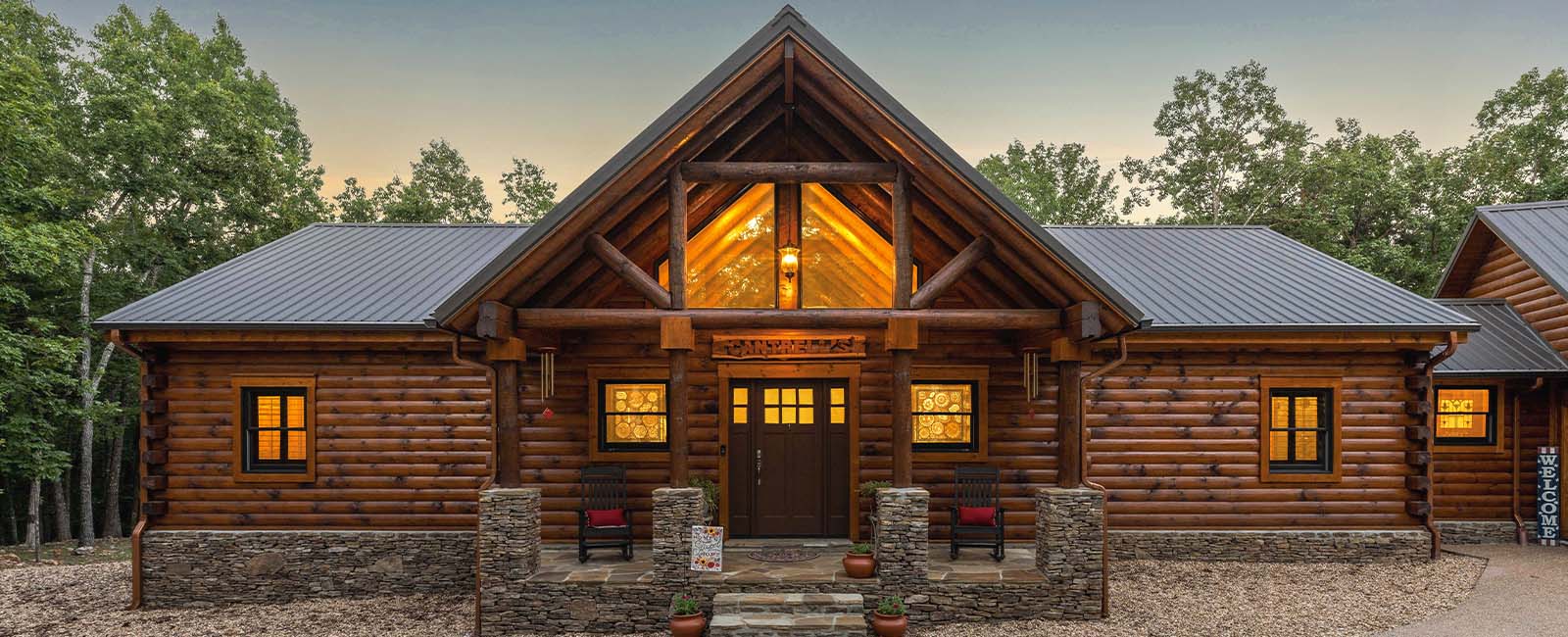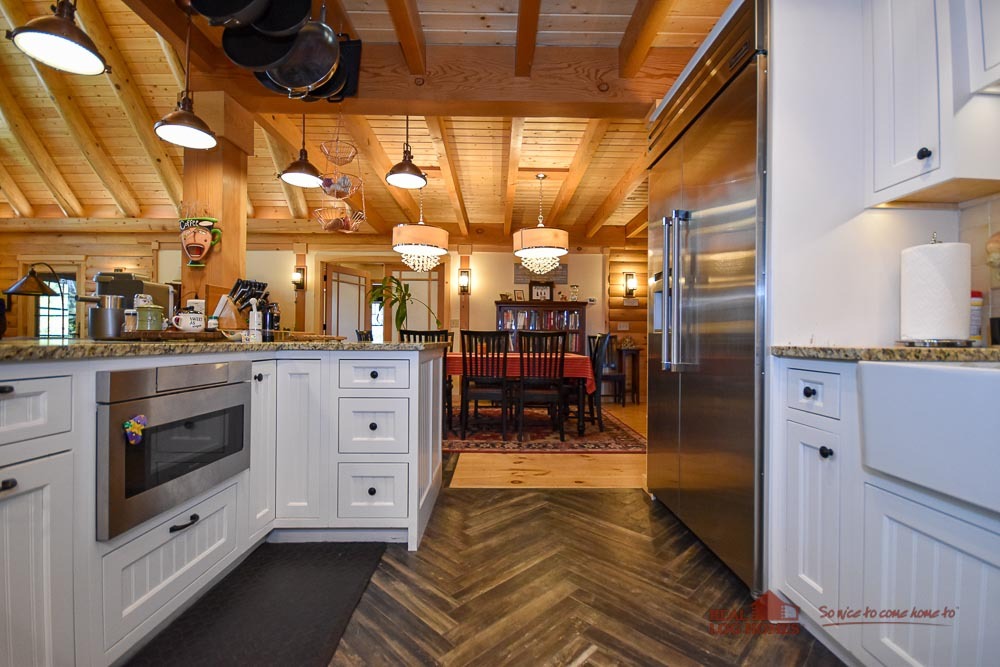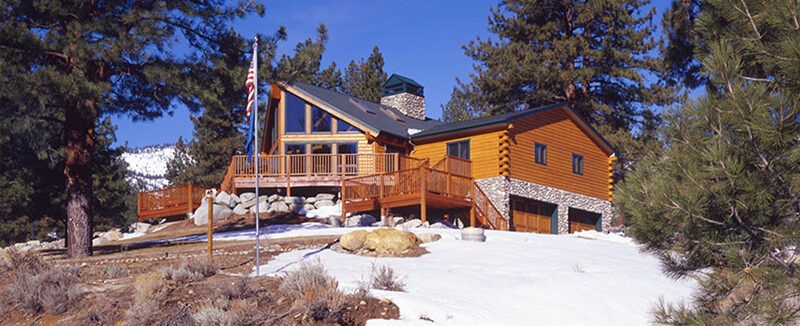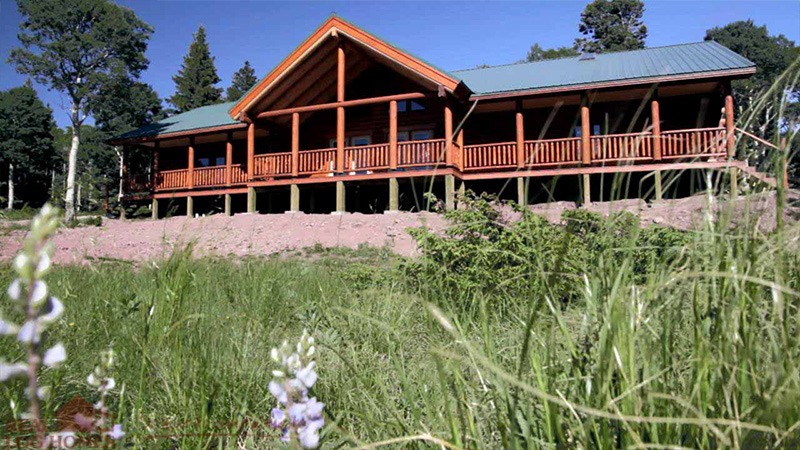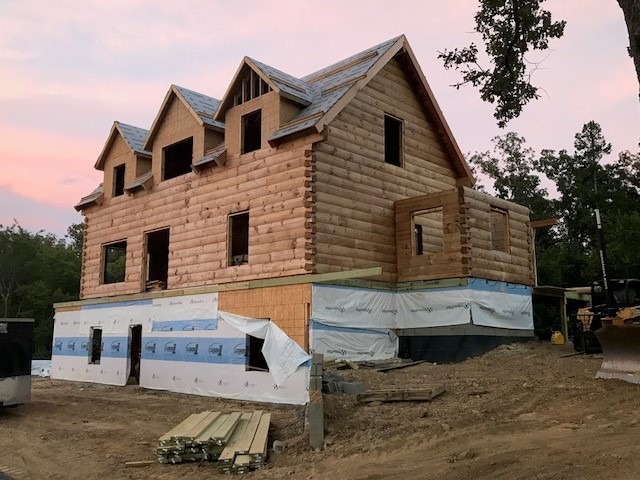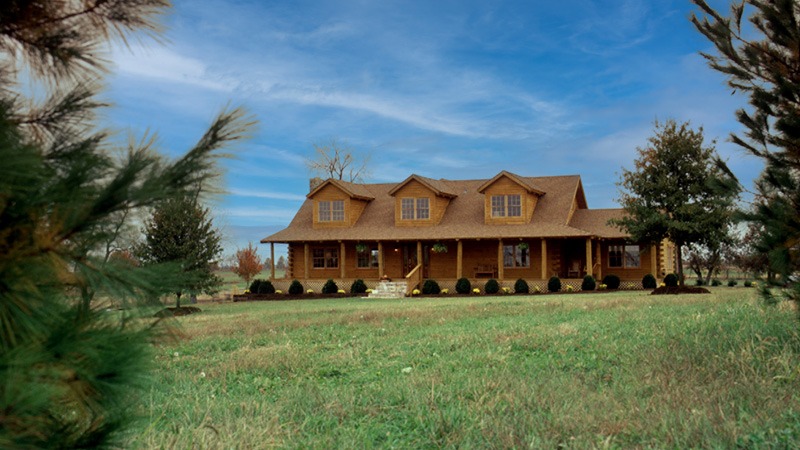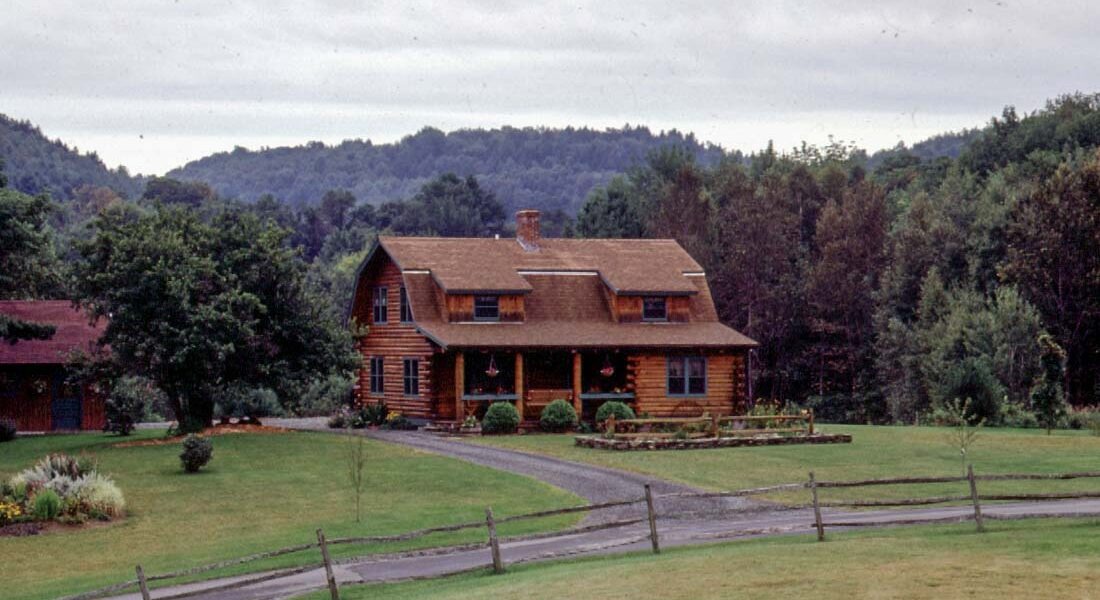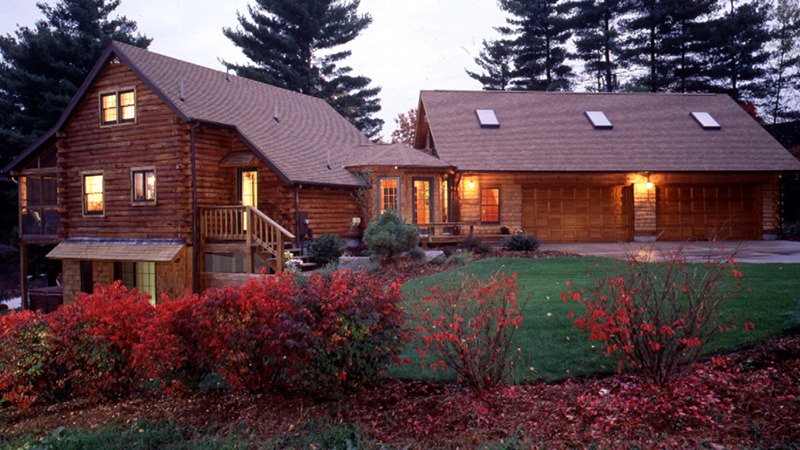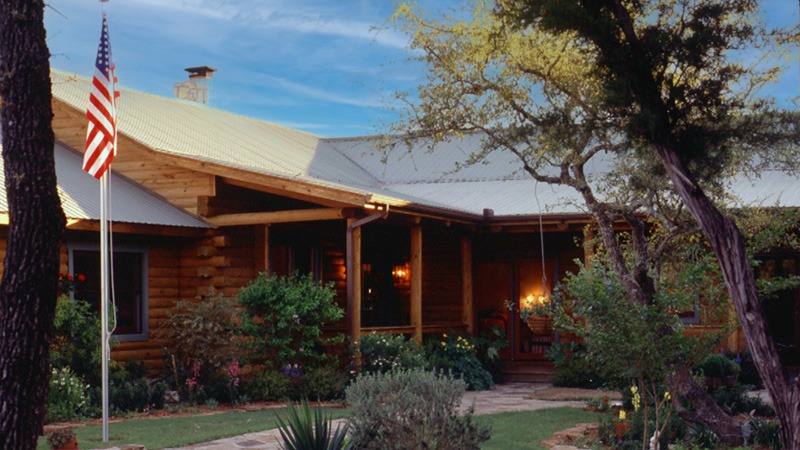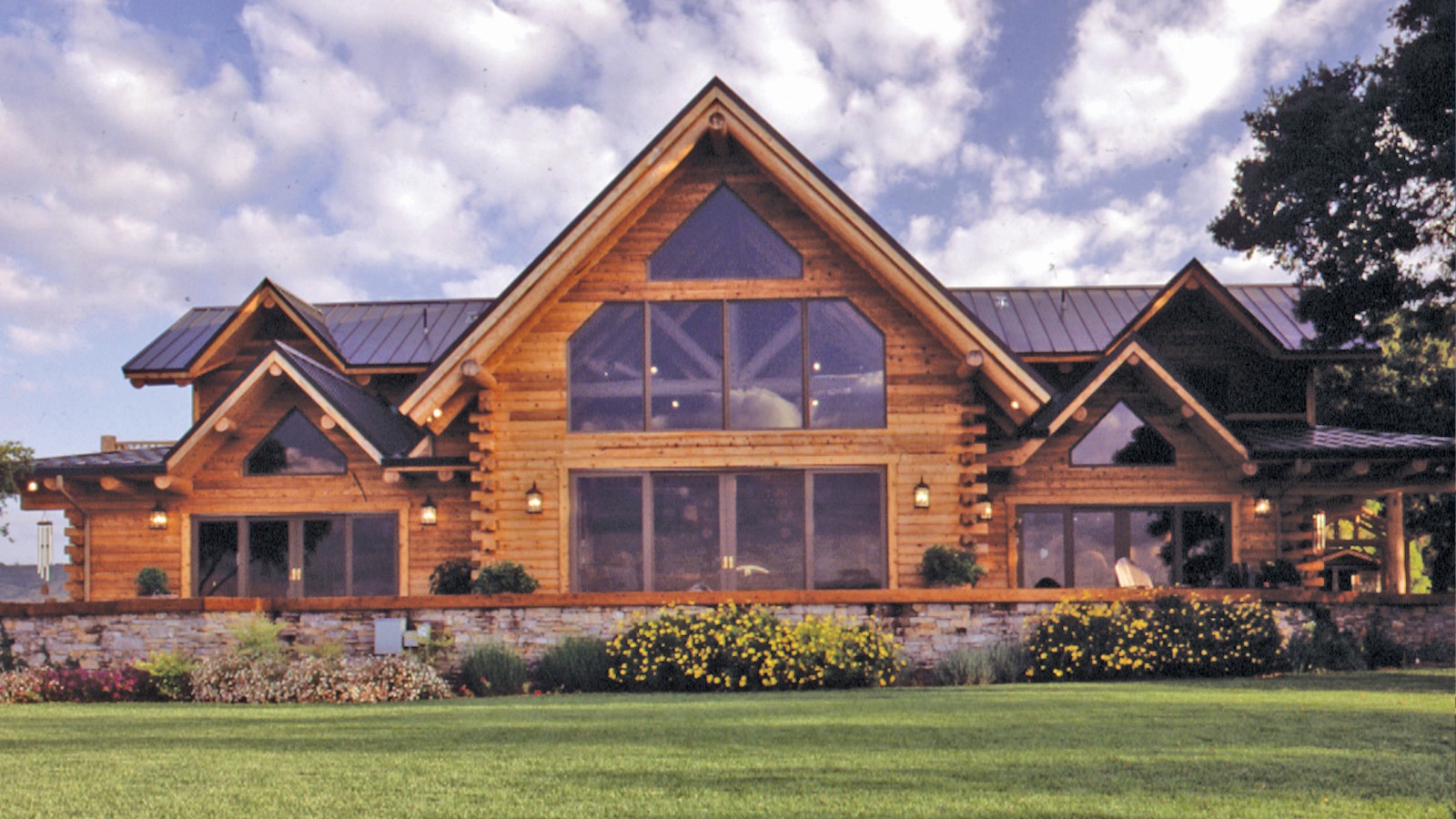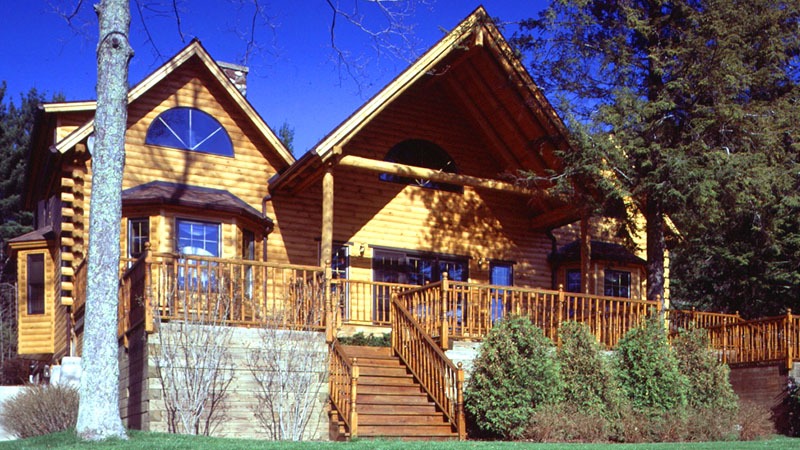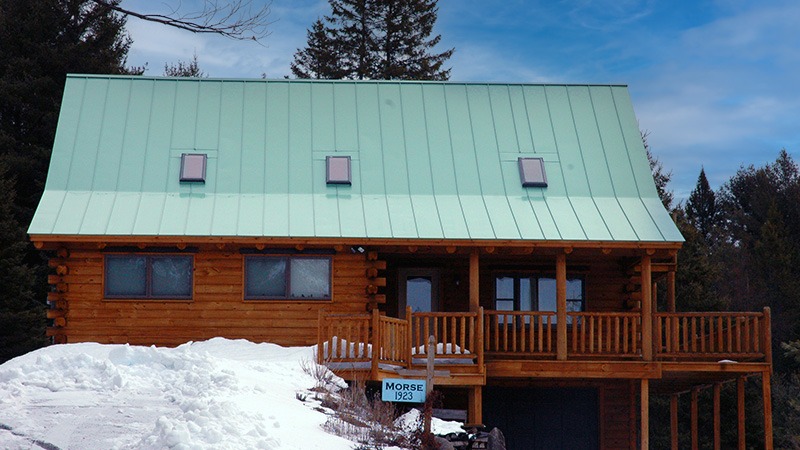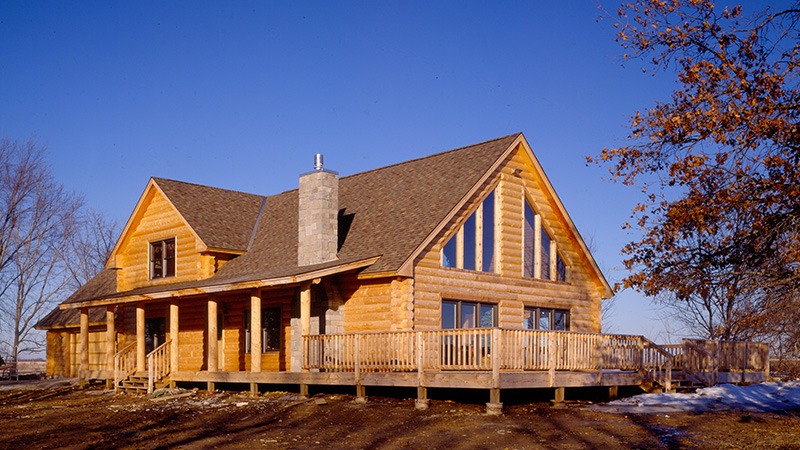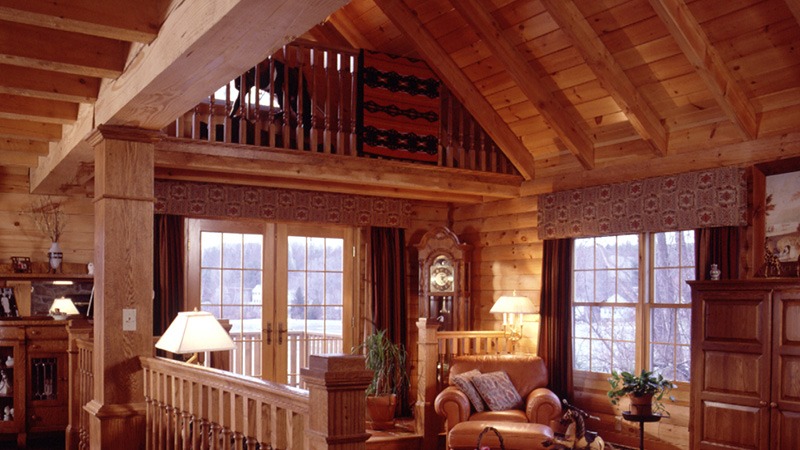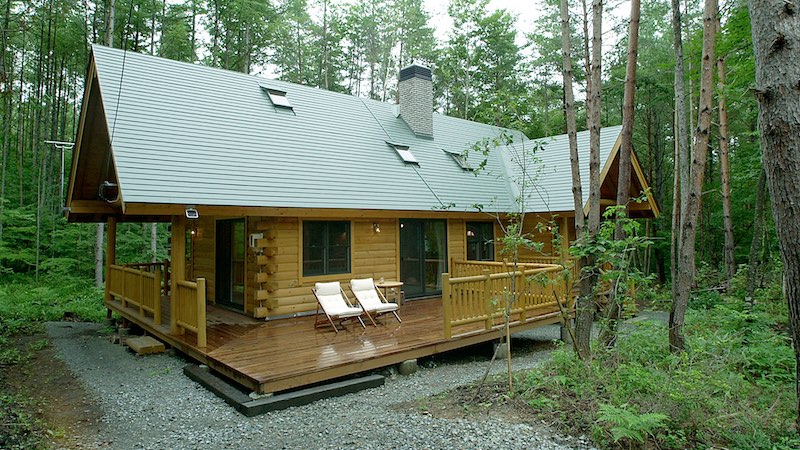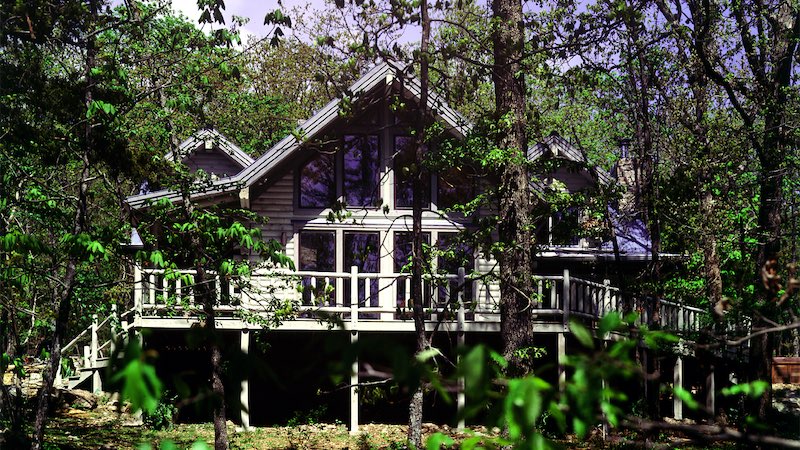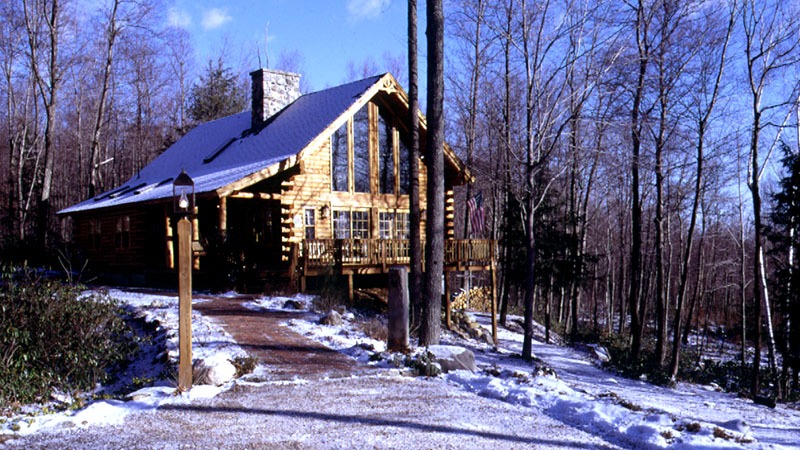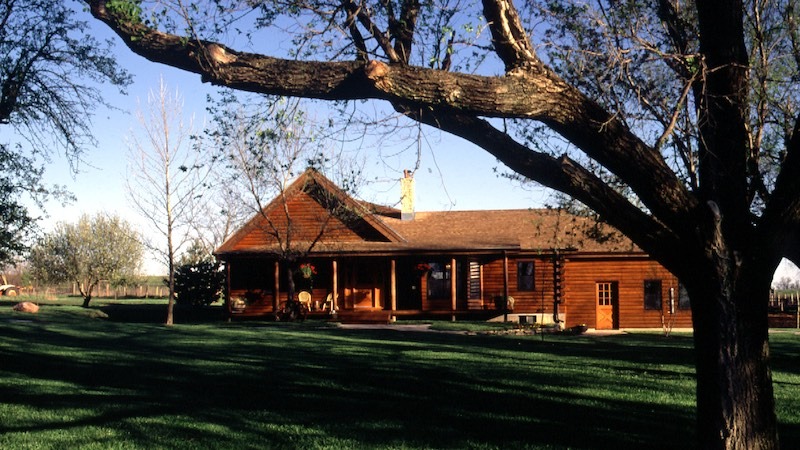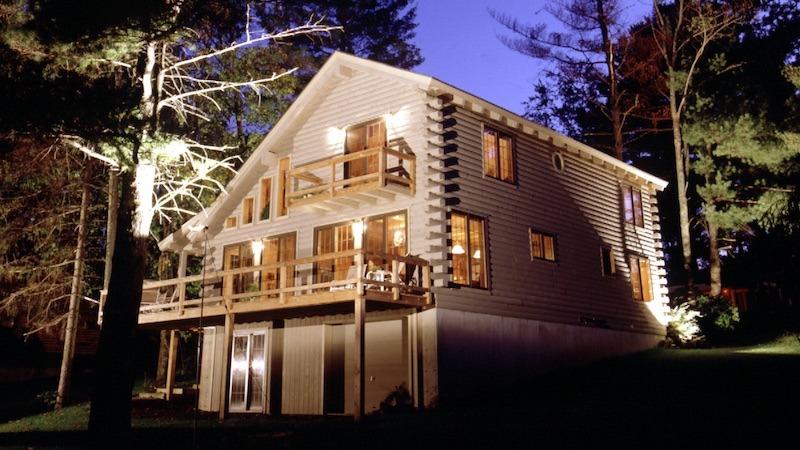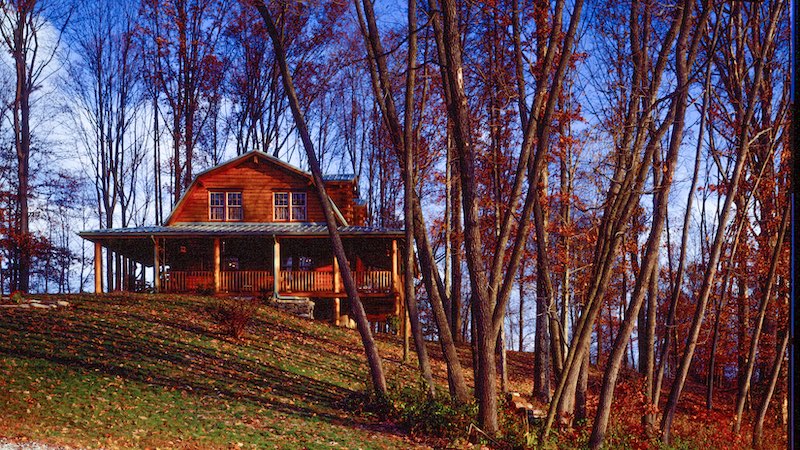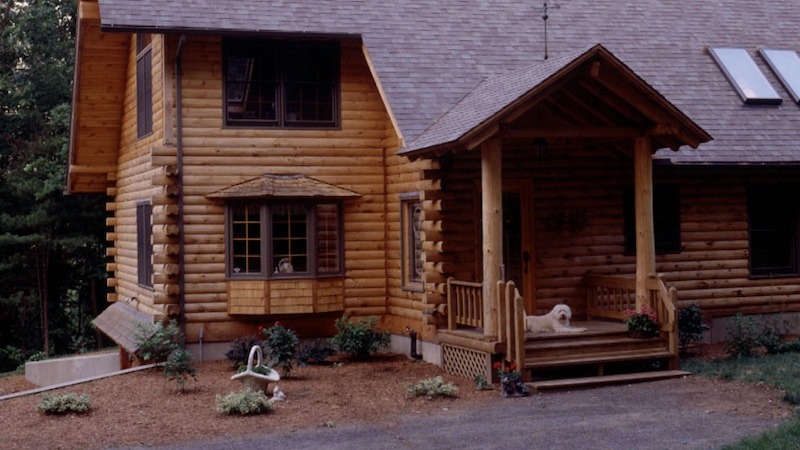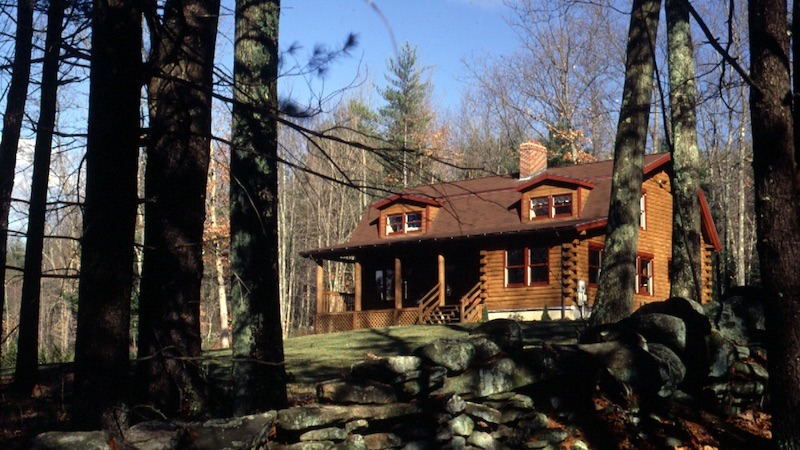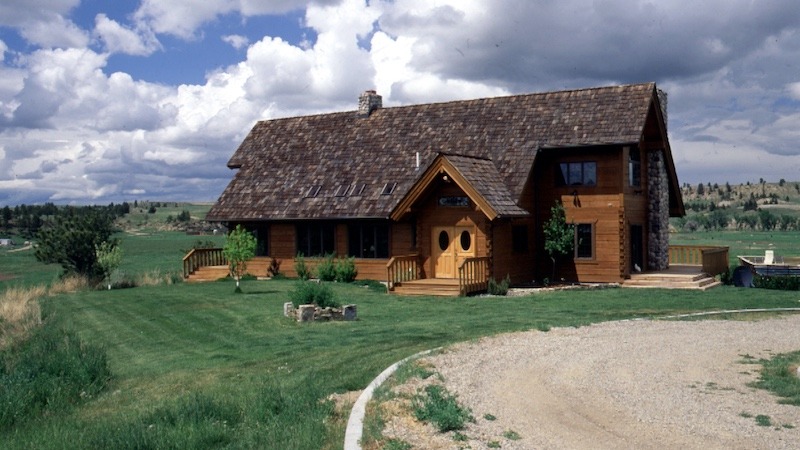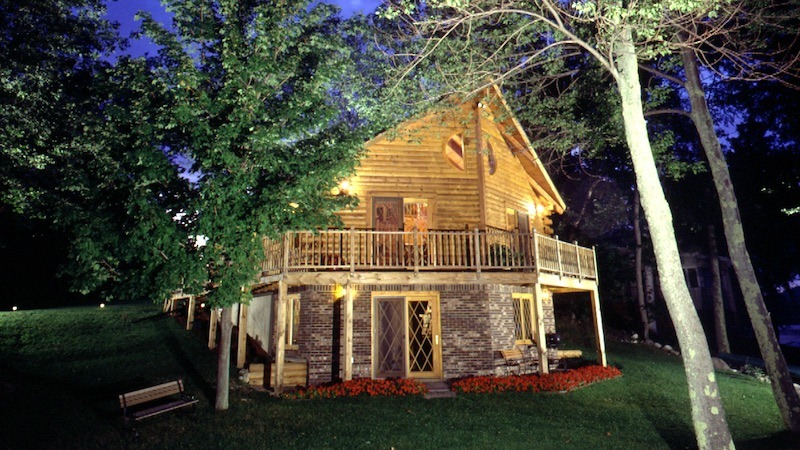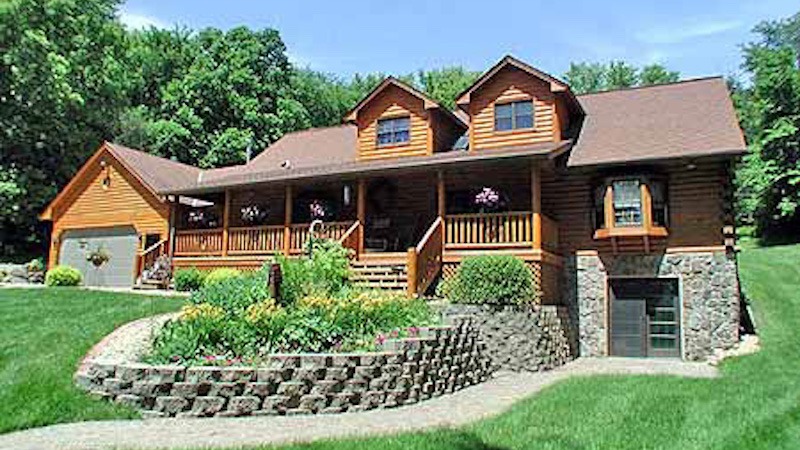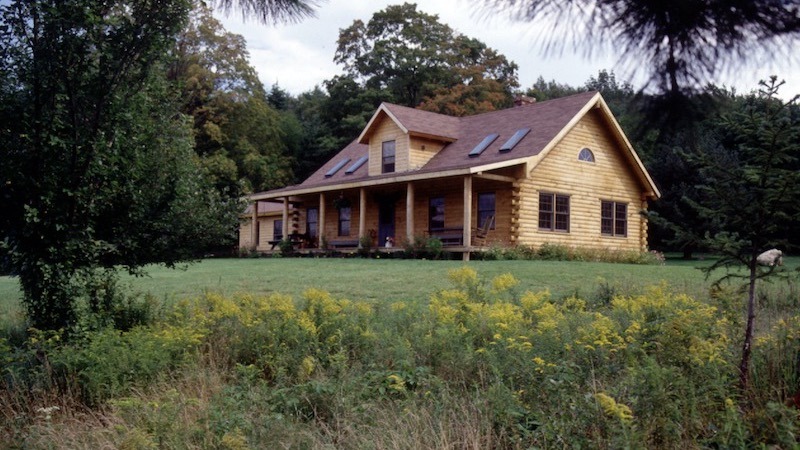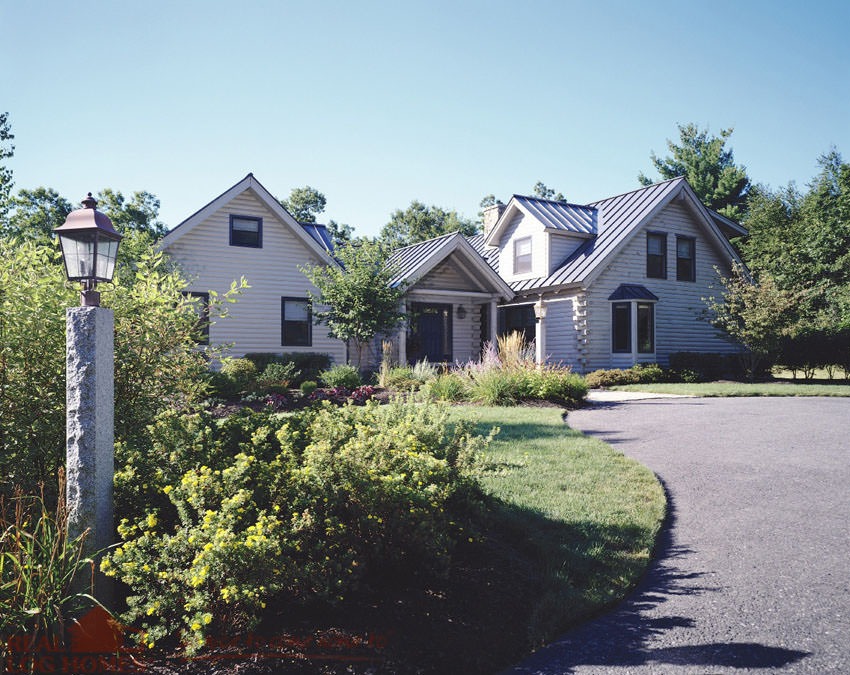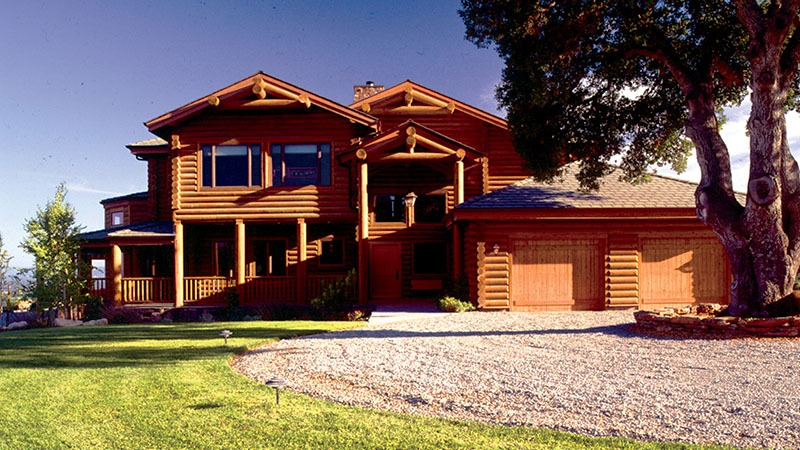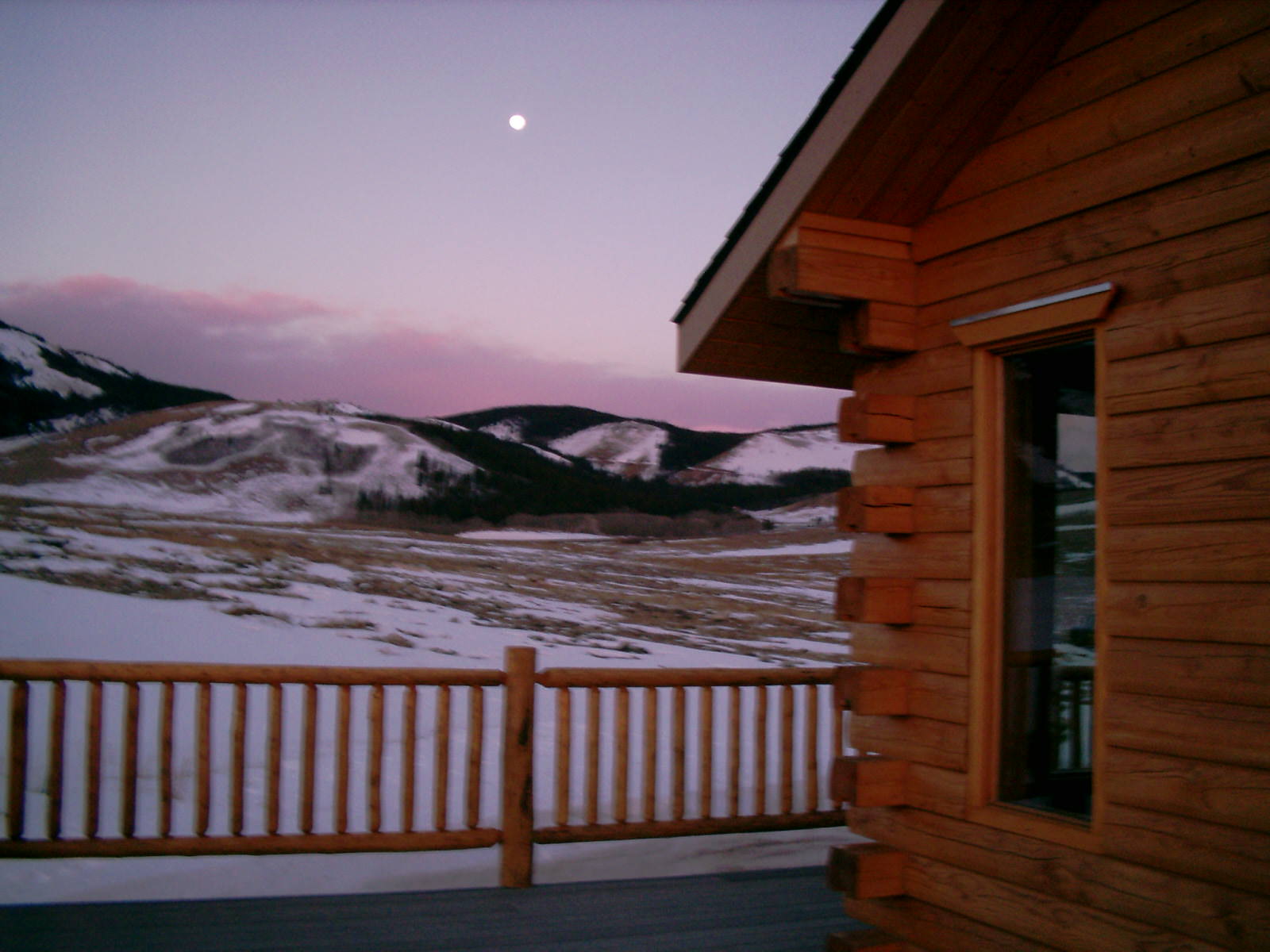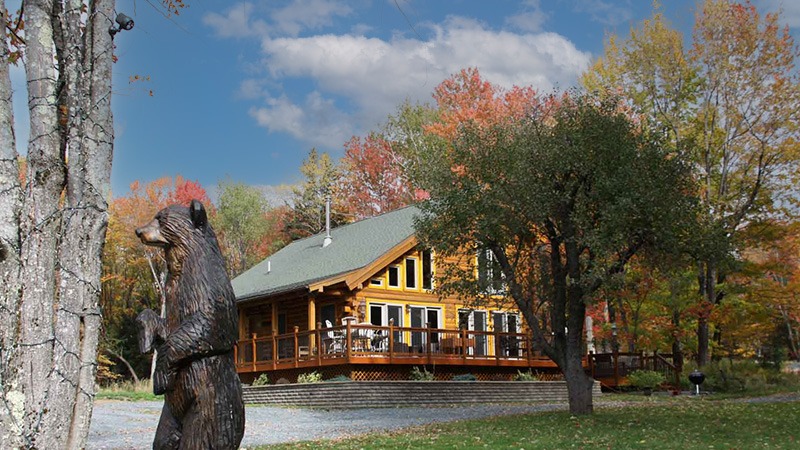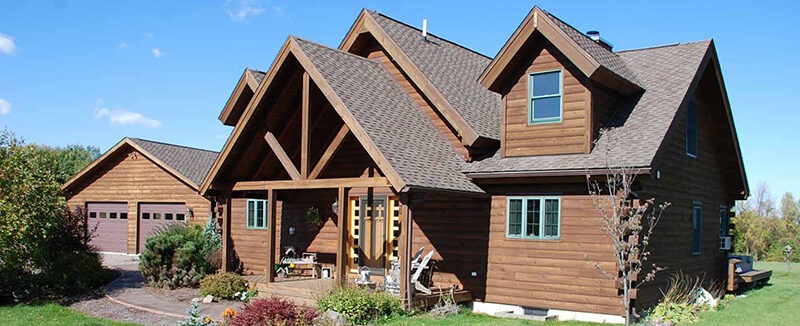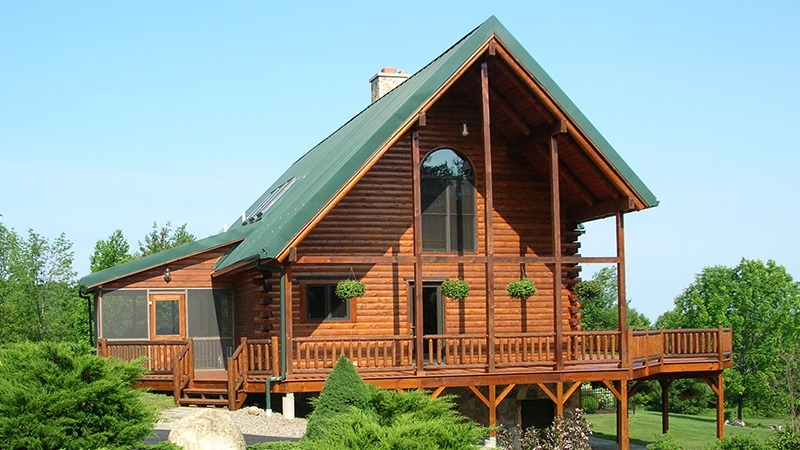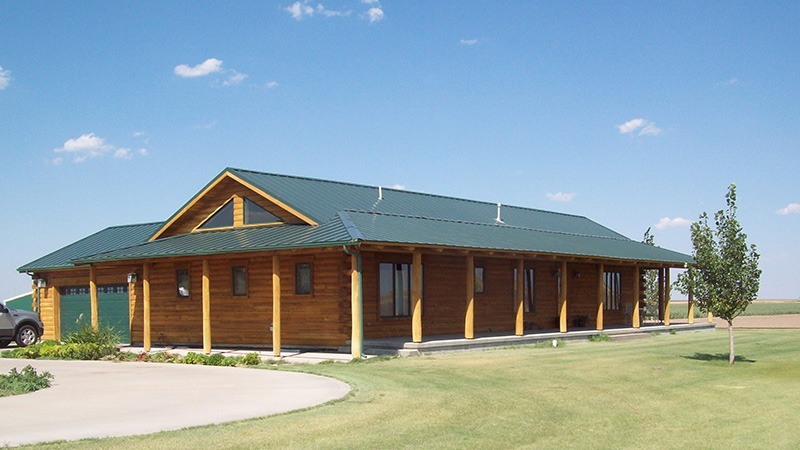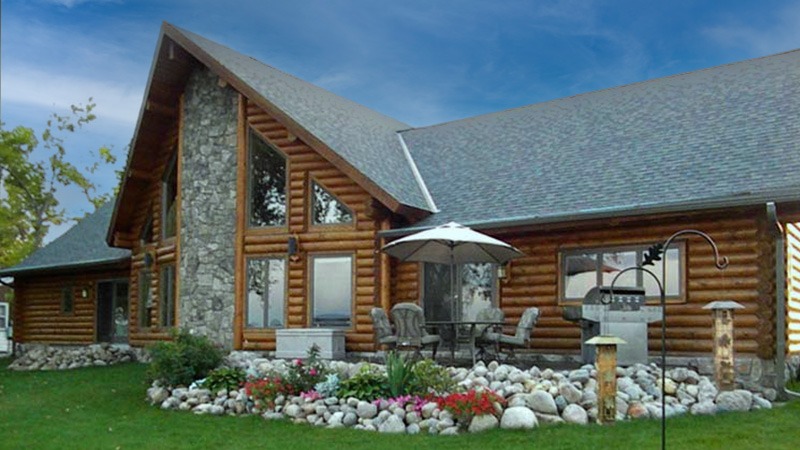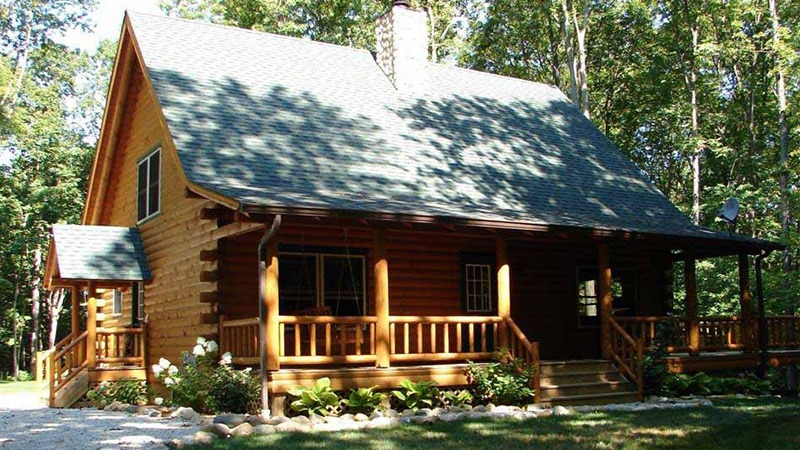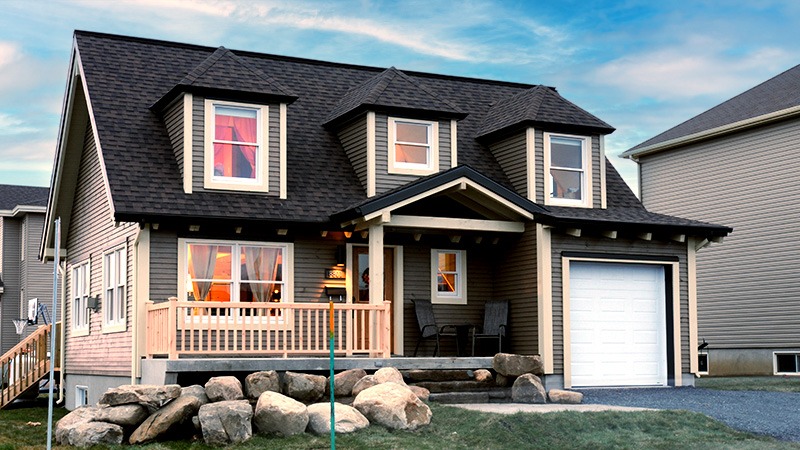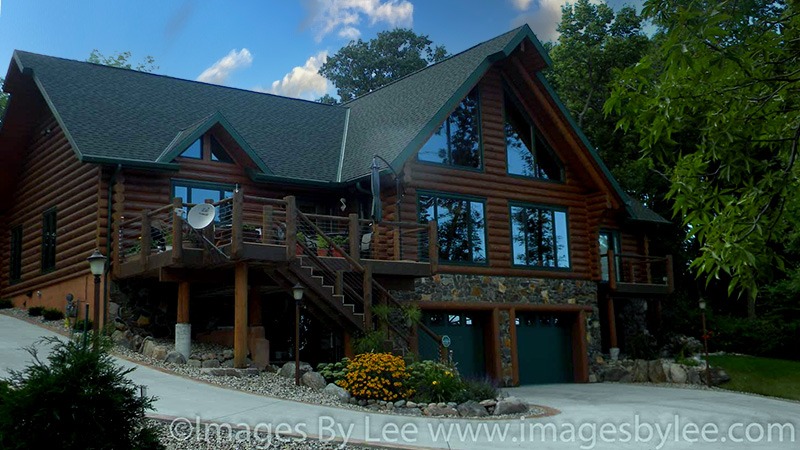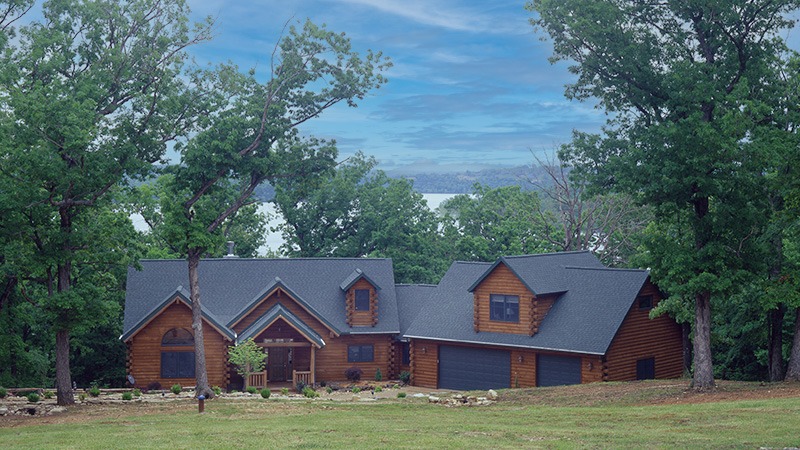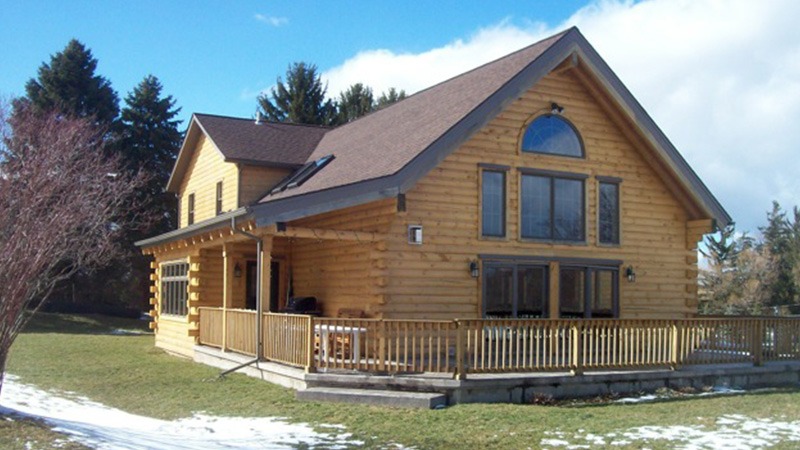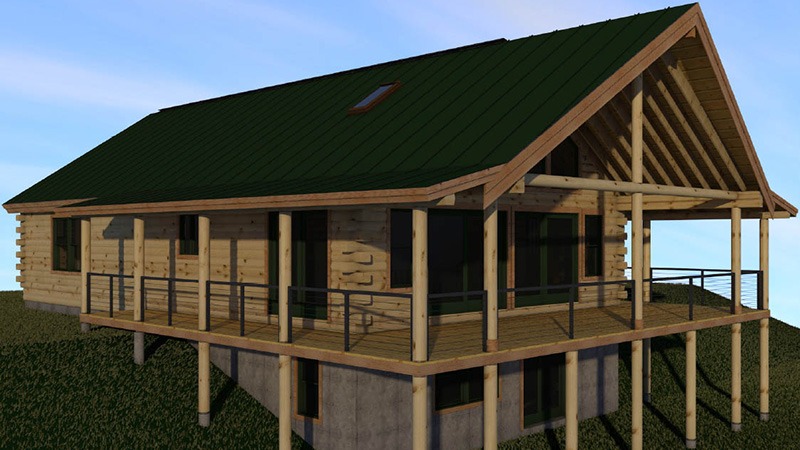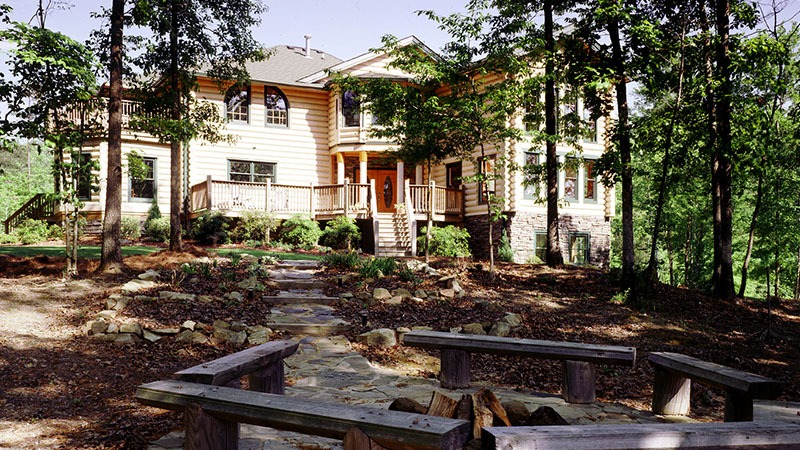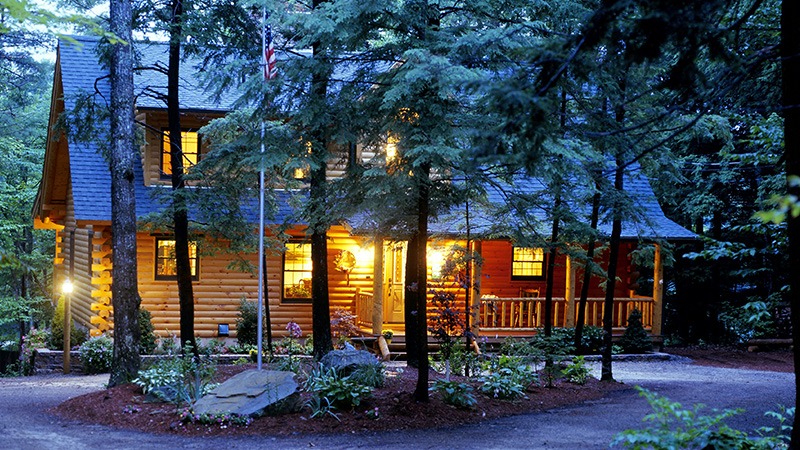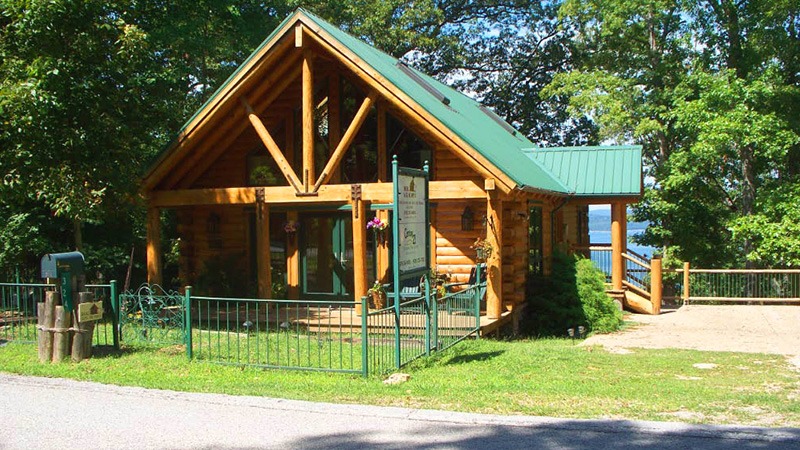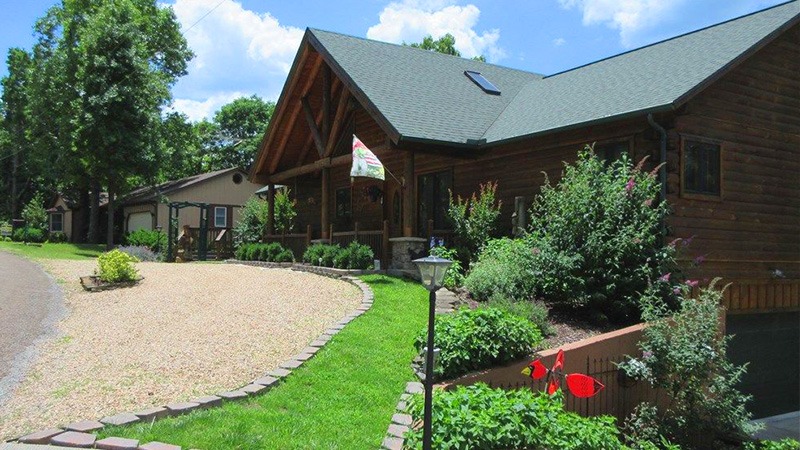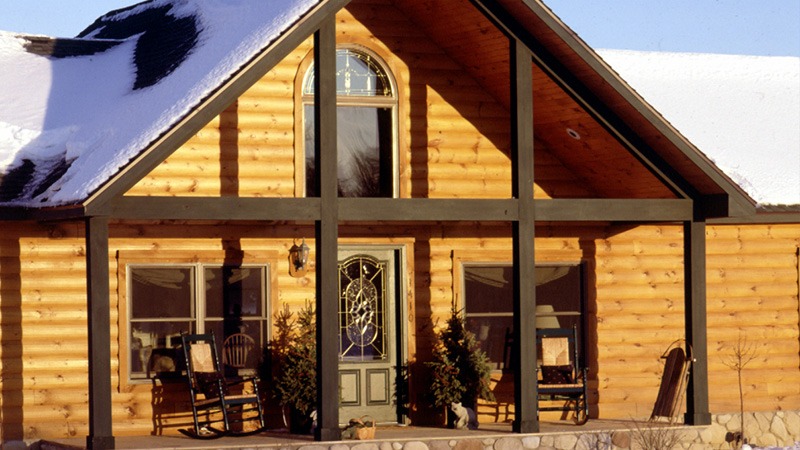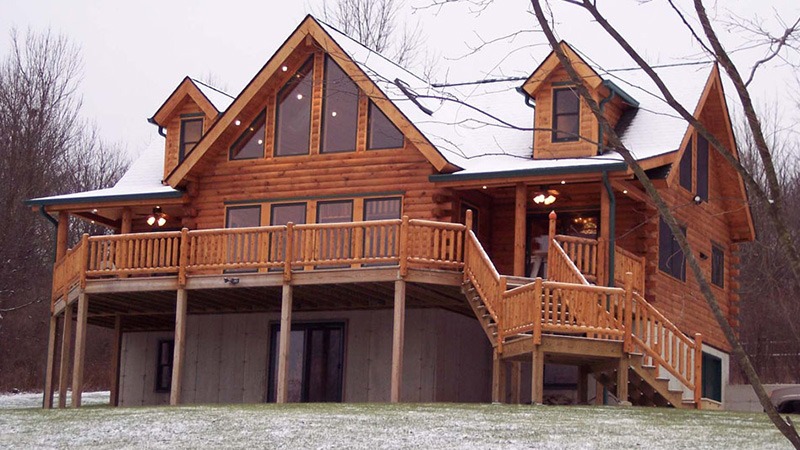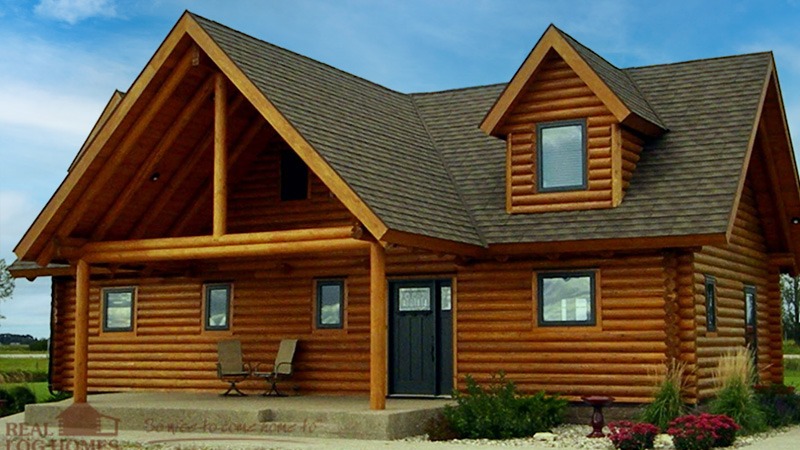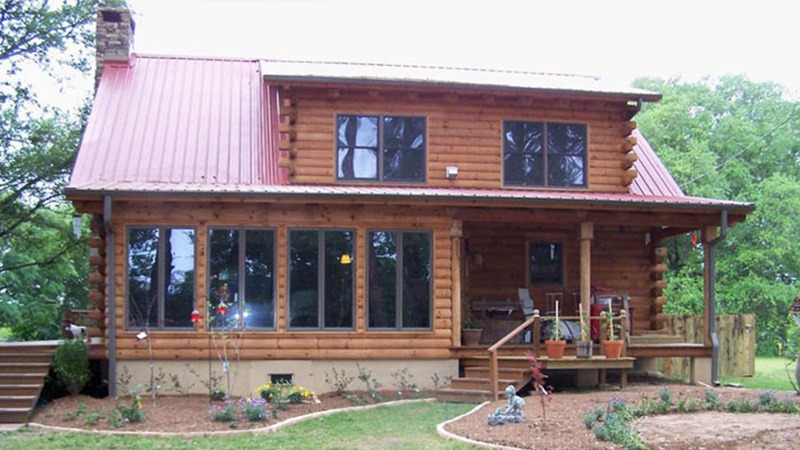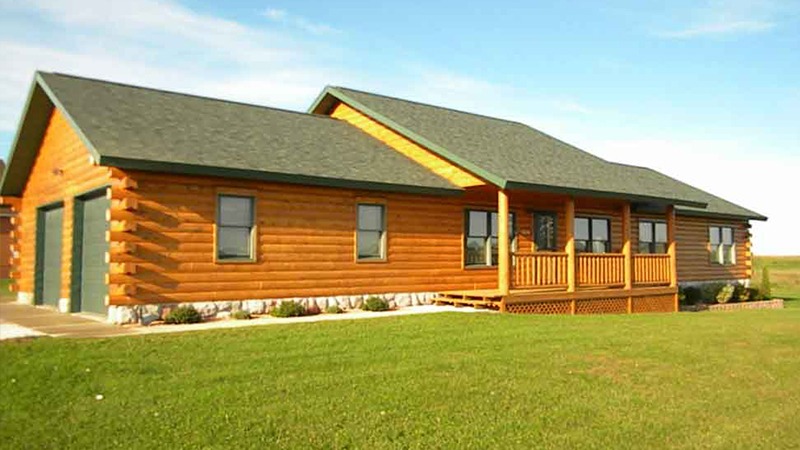It may only be September, but before we know it, frost will be creeping in and snow will start to fly. It’s the time of year to think about finding that chili recipe, making sure the down comforter is clean and ready, and thinking about all the ways you’ll stay cozy and toasty during the winter months. So we thought it was a great time to talk about how solid log walls can provide all the comfort and warmth you could want, while providing a one-of-a-kind look and feel.
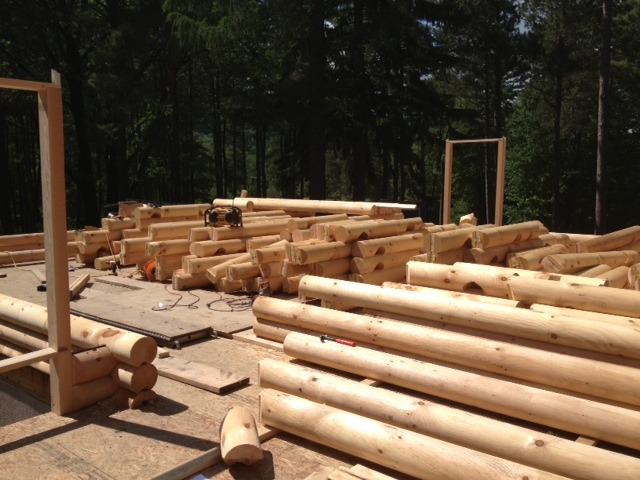
In more prevalent stick-built construction, walls are insulated with materials like fiberglass batts or foam in order to keep the house warm in winter or cool in summer. A log wall also provides insulation, with an R-value of around 1.5 per inch of log. Thus, our common log profiles with 8-inch width provide an insulation of about R-12. Although a 2×4 wall can accommodate an R-13 batt off insulation, after accounting for compression and heat loss through the studs the wall will only provide around R-10 insulation. Similarly, a 2×6 wall can accommodate an R-19 batt of insulation, but after compression and loss through the studs only provides about R-14 insulation. Therefore, an 8-inch log wall will provide insulation midway between insulated 2×4 and 2×6 walls.
While this level of insulation is reasonable, the comfort of a log home is greatly enhanced by the large heat capacity of the log walls. Simply put, heat capacity measures the amount of heat necessary to change a body’s temperature by a certain amount. Aluminum has a low heat capacity and thus heats up quickly when heat is applied; this is why it is widely used in cookware. Water, for example, has a very high heat capacity which explains why it takes so long to heat up.
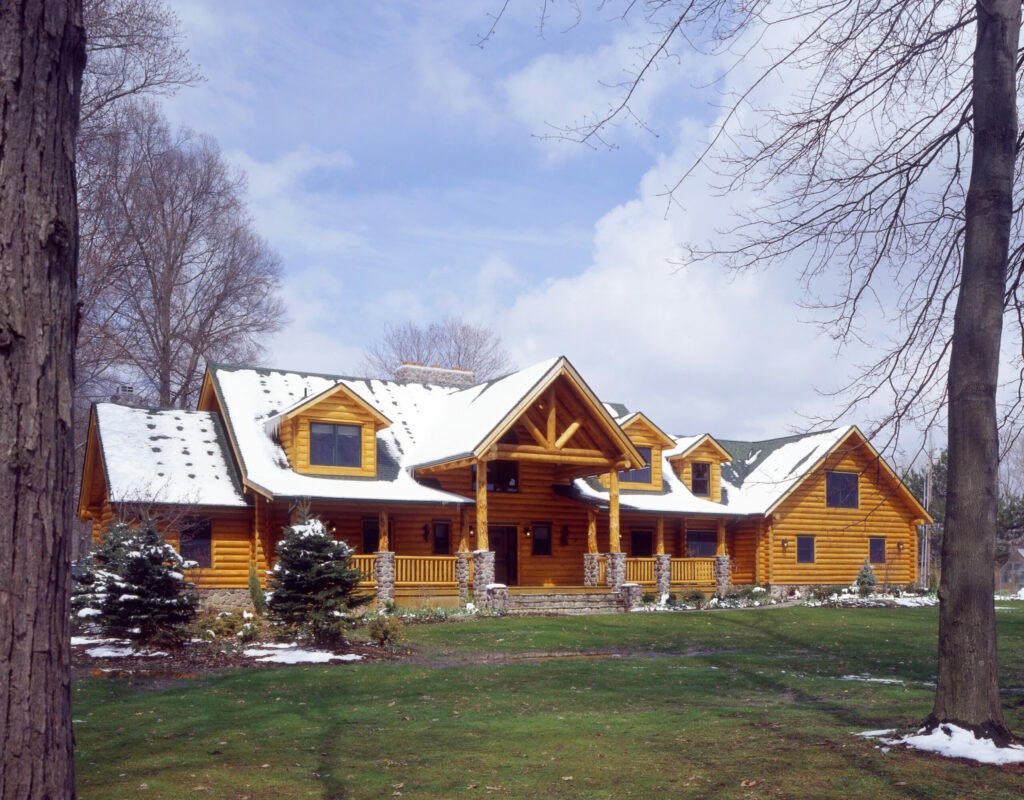
Since wood has a high heat capacity compared to other building materials, it greatly helps to regulate the temperature in a log home. In the heat of the daytime, the wall absorbs heat from the outside, but the temperature of the wall rises slowly. As a result, the wall stores the heat during the day but does not release as much heat into the home. As night falls, the temperature outside drops but the wall has stored the heat from the daytime hours. The logs release this heat into the home, providing warmth in the night. The net effect of the logs thermal mass is to decrease the heat gain in the day and lessen the heat loss at night, moderating the room temperature and providing benefits beyond what is captured by a simple R-value measurement.
Sounds pretty cozy right? Well, if you’re hoping to get into your log home and enjoy the warmth and comfort, don’t delay. Call Real Log Homes today or fill out the form below for more information
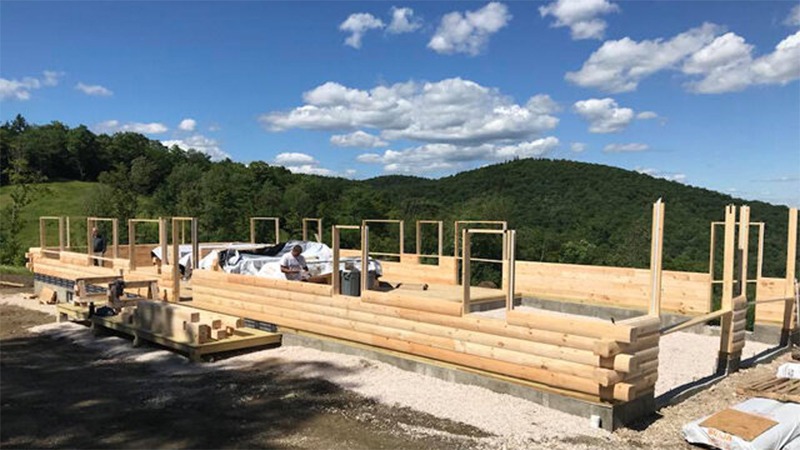
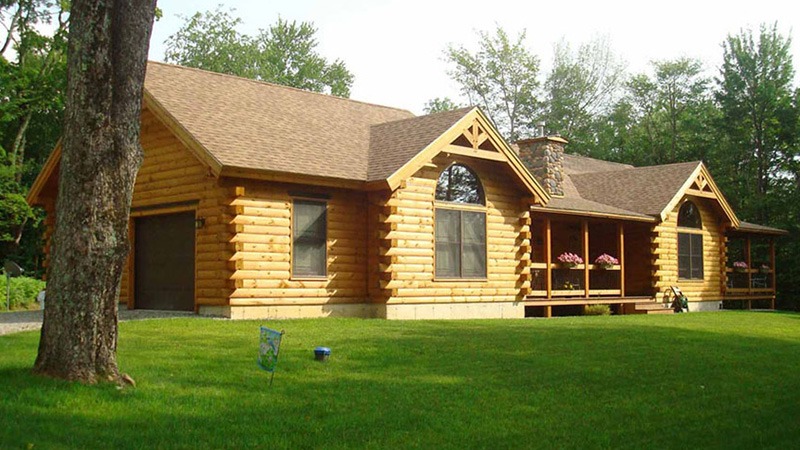
![[KAB-IN] Vermont - Renovated 1972 Real Log Homes Rental Cabin](https://realloghomes.com/wp-content/uploads/2019/03/Cavendish-KAB-IN-Woodstock-VT-51.jpg)
